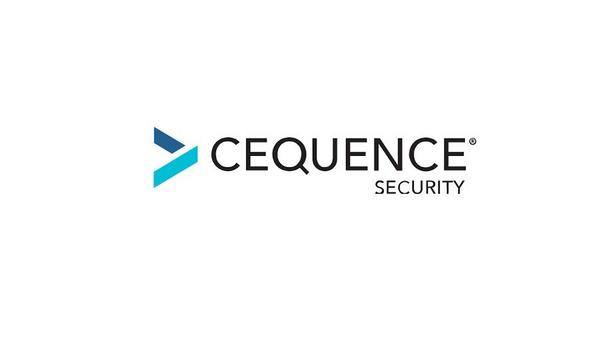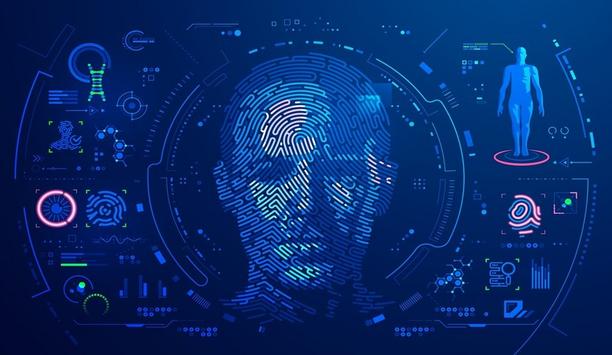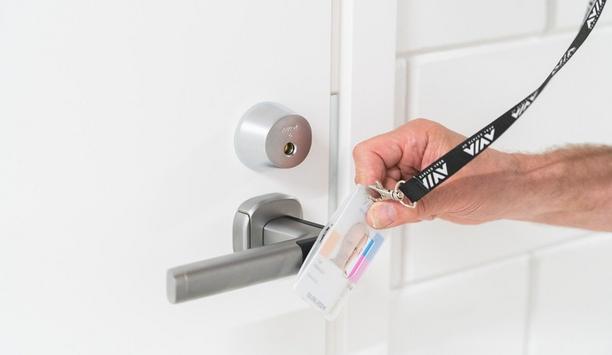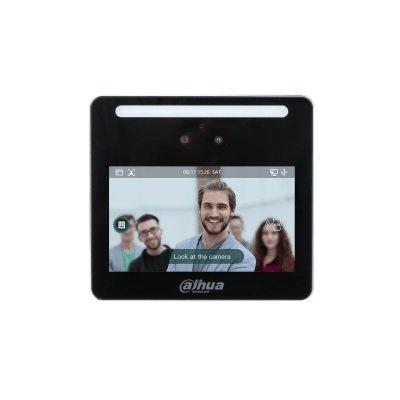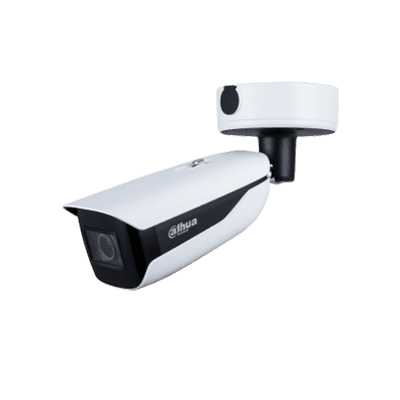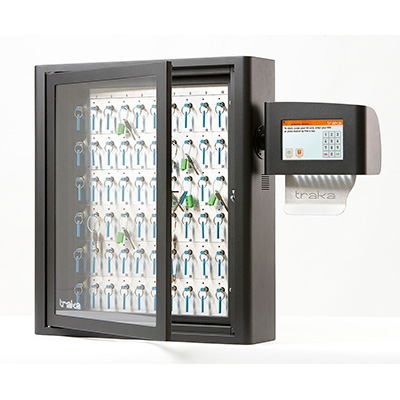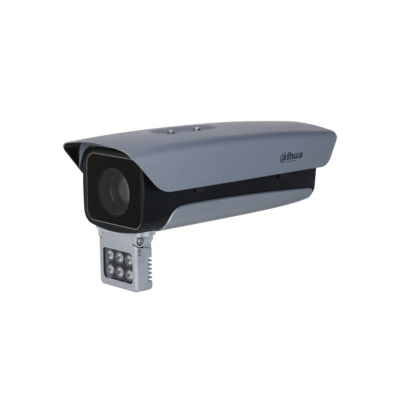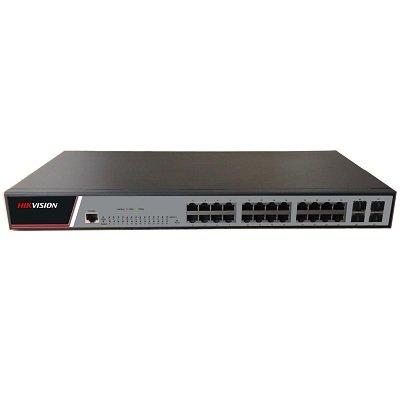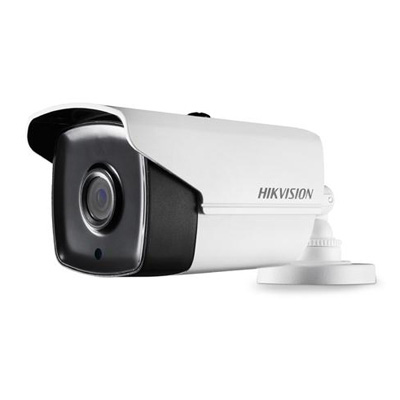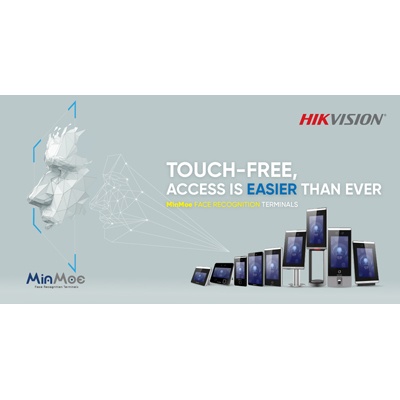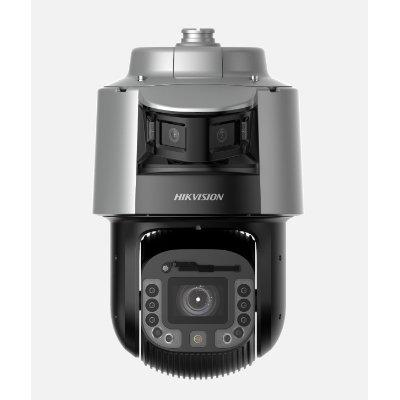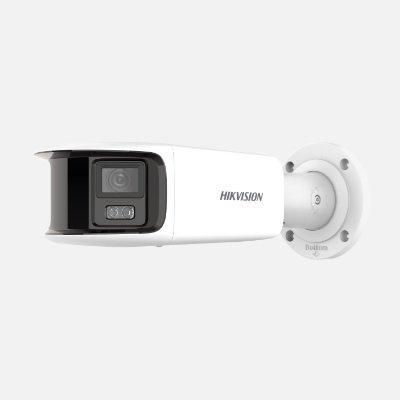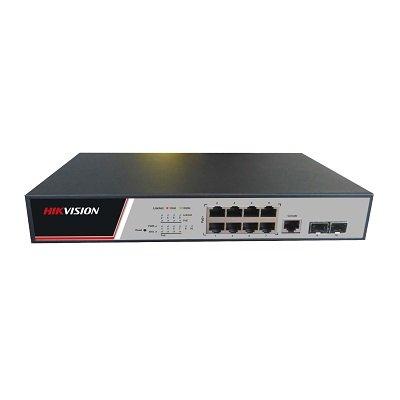Biometric Security
Reversec, a new name in cybersecurity consulting, has joined the UK Cyber Security Council as its latest Spotlight Member. This prestigious membership underscores Reversec's commitment to advancing cybersecurity standards and fostering a collaborative environment within the cyber community. Reversec will work alongside the Council and its other members to develop and promote nationally recognised standards for cyber security, supporting the NCSC’s strategy to make the UK the safest p...
Orca AI, a pioneer in maritime technology, announced it has closed an investment of $72.5 million in Series B funding. Brighton Park Capital led the round with participation from existing investors Ankona Capital and Hyperlink Ventures. The investment will enable Orca AI to further its autonomous platform, add new capabilities and enter new categories, including defence and security. Autonomous shipping capabilities The funding will maintain the company’s...
NordVPN, an innovative cybersecurity company, now includes essential identity theft recovery coverage in its cyber insurance benefits for customers in the United Kingdom. This ID theft recovery coverage complements the scam loss recovery protection that the company already offers through partnerships with select insurance providers. Cyber insurance benefits are included in the NordVPN Ultimate bundle subscription plan at no additional cost. This plan also features the NordVPN virtual priva...
Cisco has made several transformative innovation and partnership announcements that will help security professionals secure and harness the power of AI. An increasingly sophisticated threat landscape combined with an expanding talent shortage means the need has never been greater for machine scale security and response. According to Cisco’s upcoming 2025 Cybersecurity Readiness Index, companies worldwide underestimate the complexities of securing AI, with 86% saying their organisations ha...
Cequence Security, a pioneer in API security and bot management, announces significant enhancements to its Unified API Protection (UAP) platform to deliver the industry’s first comprehensive security solution for agentic AI development, usage, and connectivity. This enhancement empowers organisations to secure every AI agent interaction, regardless of the development framework. By implementing robust guardrails, the solution protects both enterprise-hosted AI applications and external AI...
Bugcrowd, a pioneer in crowdsourced cybersecurity, announces the launch of the first-ever offering to apply the scale, agility, and incentive-driven power of crowdsourcing to red teaming. This new service connects customers with a global network of vetted ethical hackers for a variety of red team engagements — fully managed through the Bugcrowd Platform. This release sets a new benchmark in the red team services market, enabling organisations to test their security environments with...
News
The Security Industry Association has sent a letter to U.S. Trade Representative - Jamieson Greer and U.S. Secretary of Commerce - Howard Lutnick requesting relief from tariffs for security industry products and asking that the Trump administration formulate a process that allows companies to apply for product-specific exemptions. Security industry – key segment of the U.S. economy The security industry is an important segment of the U.S. economy, contributing over $430 billion The security industry is an important segment of the U.S. economy, contributing over $430 billion in total economic impact and supporting over 2.1 million jobs. Manufacturers and integrators that provide essential life safety and security products to American consumers are being put under enormous strain, as they struggle to adapt to an uncertain and volatile trading environment. Requests made by SIA Not only do these tariffs hurt manufacturers by increasing the cost of key components as they compete globally, but the additional applicability to finished goods will directly increase the cost of essential security products, potentially pricing out integrators and reducing the availability of key products in the United States. SIA is requesting exemptions for imported components of security systems, security cameras, locks and other door hardware and equipment to include: Alarm systems Access control Camera systems Communications equipment and systems Identity management solutions Security-related uncrewed systems Robotics A range of other cutting-edge security solutions SIA’s agenda It is vitally important that the administration provide this relief to the security industry, and SIA will continue to advocate for this exemption to preserve some stability in the current international trading environment for the industry at large. SIA will continue to anonymously survey the industry and measure how tariffs are affecting their manufacturers and integrators, and they encourage them to reach out to their government relations team with any impact statements that they would like to share.
DigiCert, Inc., one of the global provider of digital trust, announces a record-breaking Q4 for FY2025, closing at 104% of target net new annual contract value (NNACV), 25% higher than the largest NNACV quarter in the company’s history. The company exceeded expectations for the second half of the fiscal year, fueled by demand for quantum-ready security solutions and an integrated digital trust platform that unifies PKI and authoritative DNS into a single offering. “Our record results highlight the increasing need for digital trust in a rapidly evolving security landscape,” said Amit Sinha, CEO of DigiCert. “Organisations worldwide are embracing our DigiCert ONE platform to centralise and simplify digital trust management. By securing the entire digital footprint—from authentication and encryption to DNS—our solutions help enterprises reduce risk, eliminate outages, and improve operational efficiency.” Between January 2024 and February 2025, DigiCert saw a 67% increase in the number of customers who purchased both a certificate and at least one DigiCert ONE solution, demonstrating the rising demand for an integrated, end-to-end digital trust platform. Notable business landmarks for FY2025 As part of its growth strategy, DigiCert completed its acquisition of Vercara In FY2025, DigiCert delivered significant business milestones and product innovation, reinforcing its leadership in digital trust. The company closed a record-breaking fourth quarter at 104% of target NNACV, the largest in its history, and exceeded expectations for the second half of the year, closing at 102% of the total ACV plan. As part of its growth strategy, DigiCert completed its acquisition of Vercara, expanding its digital trust capabilities to include UltraDNS and strengthening its ability to provide comprehensive security solutions to enterprises worldwide. DigiCert strengthened its executive team with key appointments, including Chief Trust Officer Lakshmi Hanspal and Chief Marketing Officer Atri Chatterjee. The company also welcomed Dr. Taher Elgamal, the widely recognised “father of SSL,” as a strategic advisor. World quantum readiness day Further reinforcing its leadership in advancing digital trust and quantum readiness, DigiCert hosted the inaugural World Quantum Readiness Day, a global initiative aimed at raising awareness and accelerating action toward post-quantum preparedness. The event attracted nearly 4,000 registrants and featured industry luminaries, including Dr. Peter Shor, Dr. Taher Elgamal, Dr. Bob Sutor, and experts from Google, Accenture, Deloitte, IBM, Cisco, and NIST. DigiCert advanced its technology leadership in FY2025 through continued innovation and investment in future-ready solutions, such as the newly-launched DigiCert ONE platform. The company filed 81 new patent applications during the year, including nine for AI/ML-specific technologies, 10 focused on post-quantum cryptography, and four advancing content authentication. Upcoming products and innovation DigiCert introduced DigiCert® Device Trust Manager, a comprehensive, lifecycle-based IoT security solution DigiCert introduced DigiCert® Device Trust Manager, a comprehensive, lifecycle-based IoT security solution that enables device manufacturers to secure connected devices at scale—from production through decommissioning. As the number of connected devices is projected to reach 56 Billion, Device Trust Manager addresses the growing complexity of compliance, data integrity, and operational risk by delivering end-to-end visibility, automated provisioning, and real-time monitoring. Additionally, DigiCert began offering Common Mark Certificates (CMCs) to address the increasing need for verifiable indicators of online trust. These globally recognised digital trust marks help organisations demonstrate compliance, build consumer confidence, and protect brand integrity. DigiCert is currently the only provider in the market to offer both Common Mark Certificates and Verified Mark Certificates, underscoring its leadership in shaping the future of digital trust.
A new report jointly issued by the Rutgers University Miller Center on Policing and Community Resilience, the Global Consortium of Law Enforcement Training Executives (GCLETE), and the Life Safety Alliance (LSA) addresses rising concerns from civil liberties groups over the use of drones by law enforcement. The comprehensive white paper presents evidence that unmanned aerial systems (UAS)—commonly referred to as drones—are saving lives, improving officer safety, and increasing police efficiency at a time when departments nationwide face severe staffing shortages. Severe staffing shortages However, the report’s authors conclude that such fears are largely speculative or anecdotal The report responds directly to recent claims by organizations such as the American Civil Liberties Union (ACLU), which has warned that police drone programs may usher in an era of mass aerial surveillance. However, the report’s authors conclude that such fears are largely speculative or anecdotal. “Civil liberties are a precious cornerstone of democratic societies,” said Michael Gips, co-author and President of the Life Safety Alliance. “We need to respect and preserve them. But our analysis shows that drones are being used responsibly and transparently, with policies and oversight already in place in many jurisdictions.” Law enforcement drone The 32-page report: Cites dozens of examples of drones aiding search-and-rescue, criminal apprehension, and public safety. Highlights a 150% increase in law enforcement drone use since 2018, driven by proven effectiveness. Details model policies, such as the “Five Cs” framework by DRONERESPONDERS, which emphasize privacy, transparency, accountability, and community engagement. Explores case law demonstrating that the U.S. legal system effectively balances competing interests in law enforcement drone use. Presents a sample department policy ensuring strict compliance with FAA regulations, data retention rules, and privacy safeguards. Documents the most significant relevant literature on law enforcement drone use. Outweigh theoretical risks Paul Goldenberg, Chief Advisor to the Miller Center and former DHS Senior Advisor, added: “Now is the time to inform—not inflame—the public about how drones can serve communities while upholding civil rights. This report does just that.” The authors argue against halting Drone as First Responder (DFR) programs, as recommended by the ACLU, stating that the benefits of drone deployment far outweigh theoretical risks. In fact, the report cites hundreds of successful missions, including the rescue of missing persons, apprehension of violent offenders, and disaster response. “Let’s not use fear to undermine a tool that protects our communities,” said Dr. David Grantham, national security expert and co-author. “We need thoughtful policy, not paralysis.”
Abnormal AI (Abnormal Security), the globally renowned company in AI-native human behaviour security, has unveiled its most ambitious product release to date — introducing autonomous AI agents that revolutionise how organisations train employees and report on risk, while also evolving its email security capabilities to continue to stop the world’s most advanced email attacks. In a year defined by the explosive use of malicious AI for cybercrime, Abnormal is doubling down on its mission to protect people. With its AI-native platform, Abnormal’s newest innovations bring intelligent automation to security awareness training, executive reporting, and advanced email threat detection. Abnormal AI’s autonomous AI agents “The most dangerous attacks don’t target firewalls — they target people, and people need better protection,” said Evan Reiser, CEO and Founder of Abnormal AI, adding “Today, we’re introducing true AI agents that not only protect people from advanced cyber-attacks, but also eliminate the manual effort that’s bogging down security teams.” He continues, “From personalised phishing simulations to autonomous reporting and expanded threat remediation capabilities, these innovations represent a massive leap forward in how AI can be operationalised across the security stack.” Introducing Two New AI Agents AI Phishing Coach allows organisations to replace generic training with autonomous AI platform In a recent survey, 53% of security leaders agreed that the effort required to run and maintain their organisation’s current security awareness training program isn’t worth the impact it appears to be having. To solve this pain point, the launch of AI Phishing Coach allows organisations to replace ineffective, generic training with a personalised, autonomous AI platform. By converting real attacks blocked by Abnormal into tailored simulations for each user, it delivers instant coaching modules when users click — no more canned videos or impersonalised courses. For company-wide training, AI-generated videos are created on-demand, branded, and customised to each organisation's threat landscape. Abnormal’s behavioural AI engine Unlike legacy training platforms that rely on static templates and outdated scenarios, AI Phishing Coach uses real-time behavioural threat data to deliver hyper-relevant training experiences. Because it’s powered by Abnormal’s behavioural AI engine, it learns from each organisation’s threat environment and adapts training dynamically — providing proactive education before attacks succeed. It’s like giving every employee their own AI-powered security mentor — without adding any operational burden to security teams. AI Data Analyst In addition to AI Phishing Coach, Abnormal is also launching AI Data Analyst to turn complex security data into instantly usable intelligence — providing admins with better reporting tools and saving teams dozens of hours in manual data aggregation. AI Data Analyst acts as an intelligent agent that proactively delivers reports directly to customers AI Data Analyst acts as an intelligent agent that proactively delivers reports directly to customers, highlighting the value Abnormal is bringing to their organisation. Customers can then interact with the agent to ask follow-up questions, explore specific data points, or request customised board decks — complete with interactive slides and plain-language insights — tailored to showcase the impact of Abnormal AI on their security posture. Enhancing Email Security to Replace the SEG As email attacks continue to bypass legacy secure email gateways (SEGs), the Abnormal Behaviour Platform has consistently outperformed traditional tools — and even human analysts. Currently, three-fourths of Abnormal customers have moved away from their third-party SEG. To support this shift and continue to provide more visibility and flexibility, Abnormal is rolling out three no-cost upgrades to Inbound Email Security, now available to all customers: Quarantine Release: Consolidates Microsoft-quarantined emails into the Abnormal platform for streamlined triage and faster response. URL Rewriting: Adds user-facing warnings and click tracking for suspicious links, improving protection without disrupting the email experience. Enterprise Remediation Settings: Allows administrators to tailor remediation actions based on threat type and business context. Together, these enhancements make it easier than ever for organisations to fully replace their legacy tools while maintaining control, visibility, and peace of mind. Expanding Globally, Scaling Securely Earlier this month, Abnormal achieved FedRAMP Moderate Authorisation in only 256 days, paving the way for federal agencies to easily adopt the platform. Currently, the company is also announcing expanded operations into Germany, with Japan and France to follow later this year. With expansion, the Abnormal Behaviour Platform will be tuned for the nuances and language needs of each market.
ASSA ABLOY has signed an agreement to acquire Door System, a Danish manufacturer of high-quality fire rated doors with particular expertise in the pharmaceutical, food and retail industries. "I am very pleased to welcome Door System to ASSA ABLOY. This acquisition delivers on our strategy to add complementary products and solutions to our core business,” says Nico Delvaux, President and CEO of ASSA ABLOY. ASSA ABLOY acquires Door System Sales for 2024 amounted to about MDKK 125 (approx. MSEK 190) with a good EBIT margin “I am delighted that Door System will join the EMEIA Division. Their strong expertise in high-quality fire rated doors aligns well to our door segment vision, providing exceptional combined fire-rated, freezer and hygienic door solutions across industries through focus on innovation and excellence. We welcome the team at Door System to the ASSA ABLOY family,” says Neil Vann, Executive Vice President of ASSA ABLOY and Head of EMEIA Division. About Door System Door System was founded in 1998 and has some 80 employees. The main office and factory are located in Hørning, Denmark. Sales for 2024 amounted to about MDKK 125 (approx. MSEK 190) with a good EBIT margin. The acquisition will be accretive to EPS from the start. The acquisition is subject to customary closing conditions and is expected to close during the second quarter of 2025.
Mission 500, the security industry's non-profit charity dedicated to supporting children in need across the US, Canada, and Puerto Rico, ended ISC West 2025 on a high note with its annual awards ceremony, which celebrated individuals and organisations making a meaningful impact through service and philanthropy. The Mission 500 Awards Ceremony took place on Thursday, April 3rd, at The Bridge within the ISC West exhibit hall. This year’s Mission 500 Humanitarian Award was presented to Allie Copeland, Chief Transformation Officer at ADI Global Distribution. The Humanitarian Award recognises individuals in the security industry who make meaningful contributions to those in need, something Copeland exemplifies through her passionate support of charitable causes like St. Baldrick’s Foundation and Mission 500 and her extensive commitment to volunteerism. Mission 500 CSR program Holmes Security Systems was recognised this year for its deep-rooted commitment The Mission 500 Corporate Social Responsibility (CSR) program is designed to honour companies in the security industry that make important contributions to those in need. Holmes Security Systems was recognised this year for its deep-rooted commitment to community safety and disaster relief. This includes its record-breaking Crimestoppers fundraising, assistance with Hurricane Helene recovery efforts, and a company-wide culture of hands-on volunteerism that continues to uplift the communities it serves. “We are always blown away by the generosity and dedication exhibited by those we honour through the Mission 500 awards, and this year’s honourees are no exception,” said Jason Lutz, Chair of Mission 500. “The goal of these awards is to first and foremost bring attention to those who make an effort to positively impact their communities, but also to inspire others within our industry to follow their example.” Honouring top finishers of Mission 500 5K/2K The 2025 Mission 500 Awards Ceremony also honoured top finishers of the Mission 500 5K/2K Hosted by Lutz, the 2025 Mission 500 Awards Ceremony also honoured top finishers of the Mission 500 5K/2K, which took place earlier that morning at Sunset Park. Brian Gass finished in first place, followed by James Goddard in second place, and Carter Schmid in third place among the male runners. On the women’s side, Amanda Venafro took first place, with Amanda Hoskins finishing second and Martha Entwistle coming in third. Awards were also given to the top three male and female racers in their respective age group. Finally, Lutz surprised previous Mission 500 Co-Chairs, Janet Fenner and Tracy Larson, with the inaugural Chairman’s Award. “These ladies helped steer Mission 500 through a pivotal time in our history, helping build relationships, expand our reach, and ensure every initiative stayed true to our mission,” said Lutz. “They deserved to be recognised for their hard work, and it only seemed fitting that they be recipients of our first-ever Chairman’s Award.”
The Security Industry Association has sent a letter to U.S. Trade Representative - Jamieson Greer and U.S. Secretary of Commerce - Howard Lutnick requesting relief from tariffs for security industry products and asking that the Trump administration formulate a process that allows companies to apply for product-specific exemptions. Security industry – key segment of the U.S. economy The security industry is an important segment of the U.S. economy, contributing over $430 billion The security industry is an important segment of the U.S. economy, contributing over $430 billion in total economic impact and supporting over 2.1 million jobs. Manufacturers and integrators that provide essential life safety and security products to American consumers are being put under enormous strain, as they struggle to adapt to an uncertain and volatile trading environment. Requests made by SIA Not only do these tariffs hurt manufacturers by increasing the cost of key components as they compete globally, but the additional applicability to finished goods will directly increase the cost of essential security products, potentially pricing out integrators and reducing the availability of key products in the United States. SIA is requesting exemptions for imported components of security systems, security cameras, locks and other door hardware and equipment to include: Alarm systems Access control Camera systems Communications equipment and systems Identity management solutions Security-related uncrewed systems Robotics A range of other cutting-edge security solutions SIA’s agenda It is vitally important that the administration provide this relief to the security industry, and SIA will continue to advocate for this exemption to preserve some stability in the current international trading environment for the industry at large. SIA will continue to anonymously survey the industry and measure how tariffs are affecting their manufacturers and integrators, and they encourage them to reach out to their government relations team with any impact statements that they would like to share.
DigiCert, Inc., one of the global provider of digital trust, announces a record-breaking Q4 for FY2025, closing at 104% of target net new annual contract value (NNACV), 25% higher than the largest NNACV quarter in the company’s history. The company exceeded expectations for the second half of the fiscal year, fueled by demand for quantum-ready security solutions and an integrated digital trust platform that unifies PKI and authoritative DNS into a single offering. “Our record results highlight the increasing need for digital trust in a rapidly evolving security landscape,” said Amit Sinha, CEO of DigiCert. “Organisations worldwide are embracing our DigiCert ONE platform to centralise and simplify digital trust management. By securing the entire digital footprint—from authentication and encryption to DNS—our solutions help enterprises reduce risk, eliminate outages, and improve operational efficiency.” Between January 2024 and February 2025, DigiCert saw a 67% increase in the number of customers who purchased both a certificate and at least one DigiCert ONE solution, demonstrating the rising demand for an integrated, end-to-end digital trust platform. Notable business landmarks for FY2025 As part of its growth strategy, DigiCert completed its acquisition of Vercara In FY2025, DigiCert delivered significant business milestones and product innovation, reinforcing its leadership in digital trust. The company closed a record-breaking fourth quarter at 104% of target NNACV, the largest in its history, and exceeded expectations for the second half of the year, closing at 102% of the total ACV plan. As part of its growth strategy, DigiCert completed its acquisition of Vercara, expanding its digital trust capabilities to include UltraDNS and strengthening its ability to provide comprehensive security solutions to enterprises worldwide. DigiCert strengthened its executive team with key appointments, including Chief Trust Officer Lakshmi Hanspal and Chief Marketing Officer Atri Chatterjee. The company also welcomed Dr. Taher Elgamal, the widely recognised “father of SSL,” as a strategic advisor. World quantum readiness day Further reinforcing its leadership in advancing digital trust and quantum readiness, DigiCert hosted the inaugural World Quantum Readiness Day, a global initiative aimed at raising awareness and accelerating action toward post-quantum preparedness. The event attracted nearly 4,000 registrants and featured industry luminaries, including Dr. Peter Shor, Dr. Taher Elgamal, Dr. Bob Sutor, and experts from Google, Accenture, Deloitte, IBM, Cisco, and NIST. DigiCert advanced its technology leadership in FY2025 through continued innovation and investment in future-ready solutions, such as the newly-launched DigiCert ONE platform. The company filed 81 new patent applications during the year, including nine for AI/ML-specific technologies, 10 focused on post-quantum cryptography, and four advancing content authentication. Upcoming products and innovation DigiCert introduced DigiCert® Device Trust Manager, a comprehensive, lifecycle-based IoT security solution DigiCert introduced DigiCert® Device Trust Manager, a comprehensive, lifecycle-based IoT security solution that enables device manufacturers to secure connected devices at scale—from production through decommissioning. As the number of connected devices is projected to reach 56 Billion, Device Trust Manager addresses the growing complexity of compliance, data integrity, and operational risk by delivering end-to-end visibility, automated provisioning, and real-time monitoring. Additionally, DigiCert began offering Common Mark Certificates (CMCs) to address the increasing need for verifiable indicators of online trust. These globally recognised digital trust marks help organisations demonstrate compliance, build consumer confidence, and protect brand integrity. DigiCert is currently the only provider in the market to offer both Common Mark Certificates and Verified Mark Certificates, underscoring its leadership in shaping the future of digital trust.
A new report jointly issued by the Rutgers University Miller Center on Policing and Community Resilience, the Global Consortium of Law Enforcement Training Executives (GCLETE), and the Life Safety Alliance (LSA) addresses rising concerns from civil liberties groups over the use of drones by law enforcement. The comprehensive white paper presents evidence that unmanned aerial systems (UAS)—commonly referred to as drones—are saving lives, improving officer safety, and increasing police efficiency at a time when departments nationwide face severe staffing shortages. Severe staffing shortages However, the report’s authors conclude that such fears are largely speculative or anecdotal The report responds directly to recent claims by organizations such as the American Civil Liberties Union (ACLU), which has warned that police drone programs may usher in an era of mass aerial surveillance. However, the report’s authors conclude that such fears are largely speculative or anecdotal. “Civil liberties are a precious cornerstone of democratic societies,” said Michael Gips, co-author and President of the Life Safety Alliance. “We need to respect and preserve them. But our analysis shows that drones are being used responsibly and transparently, with policies and oversight already in place in many jurisdictions.” Law enforcement drone The 32-page report: Cites dozens of examples of drones aiding search-and-rescue, criminal apprehension, and public safety. Highlights a 150% increase in law enforcement drone use since 2018, driven by proven effectiveness. Details model policies, such as the “Five Cs” framework by DRONERESPONDERS, which emphasize privacy, transparency, accountability, and community engagement. Explores case law demonstrating that the U.S. legal system effectively balances competing interests in law enforcement drone use. Presents a sample department policy ensuring strict compliance with FAA regulations, data retention rules, and privacy safeguards. Documents the most significant relevant literature on law enforcement drone use. Outweigh theoretical risks Paul Goldenberg, Chief Advisor to the Miller Center and former DHS Senior Advisor, added: “Now is the time to inform—not inflame—the public about how drones can serve communities while upholding civil rights. This report does just that.” The authors argue against halting Drone as First Responder (DFR) programs, as recommended by the ACLU, stating that the benefits of drone deployment far outweigh theoretical risks. In fact, the report cites hundreds of successful missions, including the rescue of missing persons, apprehension of violent offenders, and disaster response. “Let’s not use fear to undermine a tool that protects our communities,” said Dr. David Grantham, national security expert and co-author. “We need thoughtful policy, not paralysis.”
Abnormal AI (Abnormal Security), the globally renowned company in AI-native human behaviour security, has unveiled its most ambitious product release to date — introducing autonomous AI agents that revolutionise how organisations train employees and report on risk, while also evolving its email security capabilities to continue to stop the world’s most advanced email attacks. In a year defined by the explosive use of malicious AI for cybercrime, Abnormal is doubling down on its mission to protect people. With its AI-native platform, Abnormal’s newest innovations bring intelligent automation to security awareness training, executive reporting, and advanced email threat detection. Abnormal AI’s autonomous AI agents “The most dangerous attacks don’t target firewalls — they target people, and people need better protection,” said Evan Reiser, CEO and Founder of Abnormal AI, adding “Today, we’re introducing true AI agents that not only protect people from advanced cyber-attacks, but also eliminate the manual effort that’s bogging down security teams.” He continues, “From personalised phishing simulations to autonomous reporting and expanded threat remediation capabilities, these innovations represent a massive leap forward in how AI can be operationalised across the security stack.” Introducing Two New AI Agents AI Phishing Coach allows organisations to replace generic training with autonomous AI platform In a recent survey, 53% of security leaders agreed that the effort required to run and maintain their organisation’s current security awareness training program isn’t worth the impact it appears to be having. To solve this pain point, the launch of AI Phishing Coach allows organisations to replace ineffective, generic training with a personalised, autonomous AI platform. By converting real attacks blocked by Abnormal into tailored simulations for each user, it delivers instant coaching modules when users click — no more canned videos or impersonalised courses. For company-wide training, AI-generated videos are created on-demand, branded, and customised to each organisation's threat landscape. Abnormal’s behavioural AI engine Unlike legacy training platforms that rely on static templates and outdated scenarios, AI Phishing Coach uses real-time behavioural threat data to deliver hyper-relevant training experiences. Because it’s powered by Abnormal’s behavioural AI engine, it learns from each organisation’s threat environment and adapts training dynamically — providing proactive education before attacks succeed. It’s like giving every employee their own AI-powered security mentor — without adding any operational burden to security teams. AI Data Analyst In addition to AI Phishing Coach, Abnormal is also launching AI Data Analyst to turn complex security data into instantly usable intelligence — providing admins with better reporting tools and saving teams dozens of hours in manual data aggregation. AI Data Analyst acts as an intelligent agent that proactively delivers reports directly to customers AI Data Analyst acts as an intelligent agent that proactively delivers reports directly to customers, highlighting the value Abnormal is bringing to their organisation. Customers can then interact with the agent to ask follow-up questions, explore specific data points, or request customised board decks — complete with interactive slides and plain-language insights — tailored to showcase the impact of Abnormal AI on their security posture. Enhancing Email Security to Replace the SEG As email attacks continue to bypass legacy secure email gateways (SEGs), the Abnormal Behaviour Platform has consistently outperformed traditional tools — and even human analysts. Currently, three-fourths of Abnormal customers have moved away from their third-party SEG. To support this shift and continue to provide more visibility and flexibility, Abnormal is rolling out three no-cost upgrades to Inbound Email Security, now available to all customers: Quarantine Release: Consolidates Microsoft-quarantined emails into the Abnormal platform for streamlined triage and faster response. URL Rewriting: Adds user-facing warnings and click tracking for suspicious links, improving protection without disrupting the email experience. Enterprise Remediation Settings: Allows administrators to tailor remediation actions based on threat type and business context. Together, these enhancements make it easier than ever for organisations to fully replace their legacy tools while maintaining control, visibility, and peace of mind. Expanding Globally, Scaling Securely Earlier this month, Abnormal achieved FedRAMP Moderate Authorisation in only 256 days, paving the way for federal agencies to easily adopt the platform. Currently, the company is also announcing expanded operations into Germany, with Japan and France to follow later this year. With expansion, the Abnormal Behaviour Platform will be tuned for the nuances and language needs of each market.
ASSA ABLOY has signed an agreement to acquire Door System, a Danish manufacturer of high-quality fire rated doors with particular expertise in the pharmaceutical, food and retail industries. "I am very pleased to welcome Door System to ASSA ABLOY. This acquisition delivers on our strategy to add complementary products and solutions to our core business,” says Nico Delvaux, President and CEO of ASSA ABLOY. ASSA ABLOY acquires Door System Sales for 2024 amounted to about MDKK 125 (approx. MSEK 190) with a good EBIT margin “I am delighted that Door System will join the EMEIA Division. Their strong expertise in high-quality fire rated doors aligns well to our door segment vision, providing exceptional combined fire-rated, freezer and hygienic door solutions across industries through focus on innovation and excellence. We welcome the team at Door System to the ASSA ABLOY family,” says Neil Vann, Executive Vice President of ASSA ABLOY and Head of EMEIA Division. About Door System Door System was founded in 1998 and has some 80 employees. The main office and factory are located in Hørning, Denmark. Sales for 2024 amounted to about MDKK 125 (approx. MSEK 190) with a good EBIT margin. The acquisition will be accretive to EPS from the start. The acquisition is subject to customary closing conditions and is expected to close during the second quarter of 2025.
Mission 500, the security industry's non-profit charity dedicated to supporting children in need across the US, Canada, and Puerto Rico, ended ISC West 2025 on a high note with its annual awards ceremony, which celebrated individuals and organisations making a meaningful impact through service and philanthropy. The Mission 500 Awards Ceremony took place on Thursday, April 3rd, at The Bridge within the ISC West exhibit hall. This year’s Mission 500 Humanitarian Award was presented to Allie Copeland, Chief Transformation Officer at ADI Global Distribution. The Humanitarian Award recognises individuals in the security industry who make meaningful contributions to those in need, something Copeland exemplifies through her passionate support of charitable causes like St. Baldrick’s Foundation and Mission 500 and her extensive commitment to volunteerism. Mission 500 CSR program Holmes Security Systems was recognised this year for its deep-rooted commitment The Mission 500 Corporate Social Responsibility (CSR) program is designed to honour companies in the security industry that make important contributions to those in need. Holmes Security Systems was recognised this year for its deep-rooted commitment to community safety and disaster relief. This includes its record-breaking Crimestoppers fundraising, assistance with Hurricane Helene recovery efforts, and a company-wide culture of hands-on volunteerism that continues to uplift the communities it serves. “We are always blown away by the generosity and dedication exhibited by those we honour through the Mission 500 awards, and this year’s honourees are no exception,” said Jason Lutz, Chair of Mission 500. “The goal of these awards is to first and foremost bring attention to those who make an effort to positively impact their communities, but also to inspire others within our industry to follow their example.” Honouring top finishers of Mission 500 5K/2K The 2025 Mission 500 Awards Ceremony also honoured top finishers of the Mission 500 5K/2K Hosted by Lutz, the 2025 Mission 500 Awards Ceremony also honoured top finishers of the Mission 500 5K/2K, which took place earlier that morning at Sunset Park. Brian Gass finished in first place, followed by James Goddard in second place, and Carter Schmid in third place among the male runners. On the women’s side, Amanda Venafro took first place, with Amanda Hoskins finishing second and Martha Entwistle coming in third. Awards were also given to the top three male and female racers in their respective age group. Finally, Lutz surprised previous Mission 500 Co-Chairs, Janet Fenner and Tracy Larson, with the inaugural Chairman’s Award. “These ladies helped steer Mission 500 through a pivotal time in our history, helping build relationships, expand our reach, and ensure every initiative stayed true to our mission,” said Lutz. “They deserved to be recognised for their hard work, and it only seemed fitting that they be recipients of our first-ever Chairman’s Award.”


Expert commentary
In today’s fast-evolving aviation landscape, innovation isn’t optional — it’s essential. With passenger traffic in the Asia-Pacific continuing to surge, the region is facing a pivotal moment: adapt with scalable tech, or fall behind. In January 2025 alone, APAC carriers accounted for 56.6% of global passenger traffic growth. Airports are operating at near capacity, with a record-high Passenger Load Factor (PLF) of 82.1%, leading to pronounced congestion at check-in counters, security checkpoints, and boarding gates. Increasing passenger volumes As airports strive to manage increasing passenger volumes without resorting to costly and time-consuming infrastructure expansions, technology — particularly facial recognition and biometric automation — emerges as a viable solution. However, the full realisation of these innovations requires more than just installing new system However, the full realisation of these innovations requires more than just installing new systems. It’s about building the right ecosystem of partners, processes, and policies to ensure sustainable, secure, and scalable growth. Presenting physical documents According to their estimates, over 120 APAC airports have already deployed biometric solutions at key travel touchpoints, including check-in, bag drop, security, and boarding. Thailand exemplifies this shift, with facial recognition deployed at six major airports — Suvarnabhumi, Don Mueang, Chiang Mai, Chiang Rai, Phuket, and Hat Yai — dramatically reducing passenger processing times. These systems allow travelers to verify their identities seamlessly at multiple touchpoints, from check-in and security screening to boarding gates, without presenting physical documents. This case reflects the Airports of Thailand’s (AOT) commitment to leveraging technology to improve operational efficiency and passenger experience. Digital identity programs Biometric solutions also extend beyond the airport: digital identity programs enable travelers to verify their identities before arriving at the terminal, creating seamless journeys from curb to gate. In this environment, facial recognition is not merely a futuristic innovation; it has become an operational imperative. Airports that fail to adapt risk falling behind, unable to manage burgeoning passenger volumes or meet evolving traveller expectations. True operational efficiency Despite its transformative potential, biometric technology cannot be successfully deployed in isolation. Achieving true operational efficiency through facial recognition requires strategic collaboration among technology vendors, IT integrators, airports, airlines, and regulatory authorities. Several pillars underpin a successful biometric implementation: Interoperability: Biometric systems must integrate seamlessly with a wide array of airline platforms, security protocols, and airport infrastructure. Lack of interoperability can lead to fragmented systems that frustrate staff and passengers alike. Scalability: Passenger volumes are forecasted to continue rising. Biometric solutions must be designed to scale rapidly in response to demand surges and future security challenges. Data Privacy and Security: With growing public scrutiny over personal data usage, airports must implement robust security frameworks that prioritise privacy and transparency. Encryption, consent-based use, and strict access controls are critical to gaining and retaining passenger trust. Future security challenges BKI can achieve significant throughput gains without major construction disruptions A case study illustrates these points: Malaysia’s planned revamp of Kota Kinabalu International Airport (BKI) aims to boost capacity by 33% over the next few years. Rather than expanding physical infrastructure alone, authorities are exploring facial recognition solutions to increase efficiency within existing spaces. By integrating biometric checkpoints at key touchpoints, BKI can achieve significant throughput gains without major construction disruptions. Such outcomes are only possible through well-coordinated technology partnerships, where vendors, airports, and integrators work toward a shared vision of future-ready travel. AI-powered computer vision What’s Next: Fully Biometric-Enabled Travel Looking ahead, the pressure on APAC airports is set to intensify. Airports Council International projects 9.5 billion air travelers globally by the end of 2025, a volume traditional processing methods cannot manage effectively. In response, AI-powered computer vision and facial recognition will continue to refine biometric processes, delivering higher accuracy rates and faster verification. Future systems will leverage real-time liveness detection, predictive analytics for crowd management, and seamless integrations across all travel stages. A fully biometric-enabled journey is becoming reality: Check-in with a glance at a kiosk Drop bags without producing an ID or boarding pass Clear security with automated facial recognition portals Board flights through biometric-enabled gates — without ever presenting a physical document. Experiencing significant growth Seamless integration across touchpoints creates a unified, frictionless journey In this vision of the future, identity becomes the ticket. Seamless integration across touchpoints creates a unified, frictionless journey. For APAC airports experiencing significant growth, full biometric enablement is becoming increasingly important for maintaining efficiency and staying competitive. At the same time, such a future demands robust technology ecosystems, where ongoing innovation is supported by partnerships that align regulatory, operational, and technological goals. Expanding physical infrastructure Building the Smart Airports of Tomorrow: Join the Conversation The aviation sector in APAC stands at a critical crossroads. Passenger growth, operational challenges, and heightened security requirements are converging, creating an urgent need for innovation. Facial recognition and biometric automation offer a clear path forward, enabling airports to handle growing volumes, enhance security, and deliver superior passenger experiences without necessarily expanding physical infrastructure. Facial recognition solutions Yet, the success of these innovations hinges on strategic, trusted technology partnerships. Airports must collaborate with technology vendors, IT system integrators, airlines, and regulators to ensure interoperability, scalability, and data security. At RecFaces, they believe the future of APAC airports is fully biometric-enabled. To explore how tech collaborations and advanced facial recognition solutions can transform airport operations, they invite users to join their free online panel discussion on April 30: ‘Smart Airports Start With Smart Tech: Facial Biometrics for APAC Airports.’
In today's rapidly evolving security landscape, facial recognition has become a buzzword that often triggers privacy and data protection concerns. However, many security professionals may not realise that "facial recognition" is an umbrella term encompassing various technologies, each with distinct applications and privacy implications. Let's dive into what these technologies really mean for security system resellers, integrators, and end-users. Facial recognition tech At its core, facial recognition technology re-identifies or verifies individuals based on their facial features, which are used as biometrics. However, not all biometric systems are based on unique identifying features. Some analyse general characteristics like facial hair style or other distinctive marks. Such traits, known as soft biometrics, can aid in identification but aren't unique enough to verify someone's identity uniquely. Personally identifiable information Modern systems incorporate robust safeguards, including data encryption and strict retention policies While facial recognition technology has applications ranging from access control to crime prevention to investigation, its implementation varies widely depending on specific needs. Modern systems incorporate robust safeguards, including data encryption and strict retention policies, to ensure the responsible handling of any personally identifiable information (PII). Understanding key technologies and applications Facial recognition encompasses several distinct technologies, each serving specific purposes. Here's a comprehensive breakdown of these technologies and their real-world applications. Key technologies: Face Verification (1:1): A one-to-one comparison where a person claims an identity (e.g., by showing an ID card), and the system verifies whether the face matches the provided identity. Example: In airports, face verification is used for automated passport control. When a traveler approaches a gate, their face is scanned and compared to the photo stored in the government database. If the face matches, the traveler is allowed through the gate without manual checks. Face Identification (1 to many): A one-to-many comparison, where a face captured by a system is compared to a database of multiple faces and facial features to identify the person. This process is often used in security or surveillance contexts. Example: In the case of a missing child at an airport, a system could scan the faces of all passengers passing through checkpoints and compare them to a photo of the child in a database. If a match is found, it triggers an alert. Face Re-identification (Many to Many): Many-to-many comparisons where multiple faces are compared to multiple other faces. This is typically used to track a person’s movement anonymously across different areas by matching their facial images at different checkpoints, without knowing their identity. Example: In a retail environment, facial re-identification might be used to track how long an anonymous person spends moving from one section of a store to another by re-identifying their face as they enter and leave different camera views. Facial recognition can be used both for real-time and offline applications. Real-Time Facial Recognition: Real-time facial recognition refers to the immediate processing of a live video feed, comparing faces to a database to generate instant alerts when a match is found. Example: At large public events like sports stadiums, real-time facial recognition might be used to detect banned individuals (e.g., known hooligans) as they attempt to enter. Post-Event (Recorded) Facial Recognition: This refers to analysing video recordings after the event has occurred, rather than in real-time. Facial recognition is applied to recorded data to identify or track individuals. Example: After a crime, investigators could use facial recognition software on recorded video from security cameras to identify suspects by matching their faces to known databases. These definitions cover various aspects of facial recognition technology, its different applications, and how biometrics are used for identification and tracking purposes. Biometrics: Biometric technologies use a person’s distinguishing physical characteristics, such as their face, fingerprint, or iris, to identify them. Example: Fingerprint or face scanning for unlocking a phone or using iris recognition for secure entry at high-security buildings like data centers. Hard Biometrics: Hard biometrics refer to physical characteristics that are sufficiently unique enough to be used for identifying a specific individual, such as a face, fingerprint, or iris. Example: Using iris recognition at airport security checkpoints to confirm the identity of a traveler. Soft Biometrics: Soft biometrics (personal features) include general attributes like height or body shape, which are not unique enough to identify a person on their own but can help narrow down re-identification when combined with other information. Example: Using height and body shape to help identify a suspect in a camera scene when facial features alone are unreliable. Appearance Similarity: This refers to distinguishing between people based on their appearance (e.g., clothing, accessories) rather than biometric features. It’s often used for accelerated investigation and statistical analysis rather than identification. Example: A retail store may track customers based on the clothes they are wearing to monitor how long they stay in the store, without tracking their faces or personal details. Liveness Detection: A method used to determine whether the subject in front of a facial recognition system is a live human being and not a photo or a video recording. Example: In some mobile payment systems, facial recognition requires users to blink or move their head slightly to ensure they are a live person and not someone trying to use a photo for authentication. Mathematical Representation: Non-reversible mathematical representations are lists of numbers based on a person's facial image or appearance based on clothing. These numbers represent characteristics but cannot be easily used to recreate the face. Example: When an organisation stores only the mathematical representations from a face rather than an actual image, even if the data is stolen, it is nearly impossible to recreate the person’s face or use the data with another system. Privacy and security considerations Modern facial recognition systems prioritise privacy through various protective measures, moving far beyond the basic security protocols of the past. Solutions integrate multiple layers of protection designed to safeguard personal data while maintaining system effectiveness. These sophisticated privacy controls work in concert to ensure responsible data handling and comply with evolving security standards. Key protective measures include: Biometric template isolation that keeps facial recognition templates separate from other personal data, with dedicated secure storage environments. Template encryption frameworks specifically designed for biometric data, using industry-standard protocols that protect facial features during both processing and storage. Biometric data anonymisation that converts facial features into non-reversible mathematical representations – into numbers - prevents the reconstruction of original face images. Cascading deletion protocols automatically remove both raw facial data and derived biometric templates after their authorised use period. Segmented access controls that separate facial recognition administrative functions (like enrollment and template management) from regular system operation. Privacy standards The key is selecting the right tool for each application and ensuring that personal data is collected The security industry continues to evolve, finding innovative ways to balance effective surveillance with privacy protection. By understanding this comprehensive range of technologies, security professionals can better serve their clients with solutions that address specific needs while maintaining appropriate privacy standards. The key is selecting the right tool for each application and ensuring that personal data is collected only when necessary and protected when it is not. Statistical analysis and pattern recognition The variety of facial recognition applications demonstrates that not all systems require storing personal information. Many modern solutions focus on statistical analysis and pattern recognition rather than individual identification, offering powerful security benefits while respecting privacy concerns. This balance of capability and responsibility represents the future of video security technology.
The artificial intelligence revolution in physical security has arrived, transforming how we protect people, assets, and infrastructure. From smart buildings that automatically adjust access protocols based on real-time threat assessments to healthcare facilities using AI-enhanced video analytics for patient safety, these technologies are reshaping the industry landscape. But with this transformation comes a new era of regulatory oversight that security professionals must navigate carefully. Convergence of AI The convergence of powerful AI capabilities with traditional security systems has created unprecedented opportunities for enhanced protections while simultaneously raising important questions about privacy, transparency, and responsible deployment. As these technologies become more sophisticated, security professionals face the dual challenge of maximising their potential while ensuring compliance with evolving regulatory frameworks. The current state of AI in security systems By combining multiple data streams, AI creates a more comprehensive and intelligent security ecosystem Today's AI-driven security solutions extend far beyond traditional security capabilities. Modern systems can understand complex human behaviours, analyse crowd patterns in transportation hubs, detect early signs of trouble in retail environments, and even predict potential security breaches before they occur. By combining multiple data streams — video feeds, access control systems, audio detection, and various sensors — AI creates a more comprehensive and intelligent security ecosystem. Industrial applications The impact is particularly evident in integrated security operations. In healthcare settings, AI systems can simultaneously monitor patient safety, manage access control, and detect unauthorised entries, all while maintaining strict privacy protocols. In education environments, these technologies help safeguard campuses by identifying unusual behaviour patterns while respecting student privacy rights. Retail operations benefit from AI's ability to not only detect potential theft but also analyse customer flow patterns and identify operational inefficiencies. The technology's capabilities continue to expand through: Advanced anomaly detection that establishes normal activity patterns and flags deviations. Predictive analytics that forecast potential security risks before incidents occur. Natural language interfaces that allow security teams to query video data using voice or text commands. Multimodal analysis combining data from thermal cameras, LIDAR, IoT sensors, and other sources. Integration of multiple data sources Security systems are evolving into predictive platforms that can anticipate and prevent incidents These innovations represent just the beginning of AI's potential impact on security applications. As algorithms become more sophisticated and computing power increases, security systems are evolving into predictive platforms that can anticipate and prevent incidents rather than simply respond to them. The integration of multiple data sources allows for a more nuanced understanding of security situations, enabling more precise and effective responses to potential threats. Emerging regulatory frameworks The rapid advancement of AI capabilities has prompted governments worldwide to develop comprehensive regulatory frameworks. The European Union has taken the lead with its AI Act, categorising AI systems based on their potential risks and establishing strict guidelines for high-risk applications. Focus on safe, secure AI The United States is following suit, with recent executive orders focusing on safe, secure, and trustworthy AI development. These initiatives reflect growing global awareness of the need to balance technological advancement with ethical considerations and human rights protection. These regulations are reshaping how security technology providers approach development and implementation. Responsibility-by-design approach Companies must consider the entire lifecycle of their AI solutions, from initial development The focus has shifted toward a "responsibility-by-design" approach, where privacy protection, data security, and ethical considerations are built into systems from the ground up. This includes robust testing protocols, responsible data practices, and continuous monitoring of AI systems post-deployment. Companies must consider the entire lifecycle of their AI solutions, from initial development through deployment and ongoing operation. Transparency, accountability For security professionals, this regulatory evolution means adapting to new requirements around transparency, accountability, and human oversight. Security teams must document how AI systems make decisions, implement safeguards against bias, and ensure human operators maintain final authority over critical security decisions. The regulations also emphasise the importance of data protection, requiring organisations to implement strict controls over how information is collected, stored, and used within AI-powered security systems. Address challenges of AI The regulatory landscape continues to evolve, with new frameworks emerging that specifically address the unique challenges of AI in security applications. These include requirements for regular system audits, mandatory impact assessments for high-risk deployments, and specific guidelines for handling sensitive personal data in security contexts. Organisations must also develop clear procedures for addressing potential AI system errors or biases, ensuring that corrective measures can be implemented quickly when needed. Preparing for the future The challenge lies in maximising security effectiveness while maintaining transparency and public trust The security industry stands at a crucial junction where innovation meets responsibility. As AI capabilities grow more sophisticated, security professionals must balance the use of these powerful tools while adhering to evolving regulatory requirements. This balance becomes particularly critical in smart city applications, where AI systems might monitor public spaces for safety while respecting individual privacy rights. The challenge lies in maximising security effectiveness while maintaining transparency and public trust. Proactive approach Success in this new landscape requires a proactive approach. Security teams should invest in understanding both the technical capabilities and regulatory implications of their AI systems. This includes developing clear protocols for data handling, establishing robust testing procedures, and implementing continuous monitoring systems that can detect and address potential issues before they become problems. Organisations must also create comprehensive training programs to ensure security personnel understand both the capabilities and limitations of AI-powered systems. Human-in-the-loop approach The human element remains crucial. While AI can process vast amounts of data and identify patterns beyond human capability, security professionals must maintain oversight and final decision-making authority. This "human-in-the-loop" approach ensures that AI serves as a powerful tool for augmenting human judgment rather than replacing it. Training and education become increasingly important as security teams must understand not only how to operate AI-enhanced systems but also how to interpret their outputs and make informed decisions based on AI-generated insights. An ever-evolving environment The integration of emerging technologies like large language models and computer vision will create new opportunities Looking ahead, the security industry will likely see continued evolution in both AI capabilities and regulatory requirements. Future systems may incorporate more advanced predictive capabilities, enhanced natural language processing, and improved ability to understand complex human behaviours. However, these advancements will need to develop within an increasingly structured regulatory framework that prioritises privacy, transparency, and ethical use. The integration of emerging technologies like large language models and computer vision will create new opportunities while also introducing novel regulatory challenges. Physical security transformation The transformation of physical security through AI represents both an opportunity and a responsibility. By embracing responsible innovation practices while maintaining strong ethical standards, security professionals can help shape a future where advanced AI capabilities and regulatory compliance work together to create safer, more secure environments for everyone. Need for security guidelines The key to success lies in viewing regulatory requirements not as obstacles but as guidelines for developing more trustworthy and effective security solutions. As the industry continues to evolve, organisations that prioritise both innovation and compliance will be best positioned to leverage AI's full potential while maintaining public trust and regulatory compliance.
Security beat
Big news on the mergers and acquisitions (M&A) front is closing out 2024, a year in which several shifts changed the face of the physical security manufacturer community. Announced in December, German giant Bosch Group is selling its Building Technologies division’s product business for security and communications technology to the European investment firm Triton. Bosch division selling to Triton The transaction encompasses three business units – Video, Access and Intrusion, and Communication – and thus the entire product business of Bosch Building Technologies that was offered for sale. All 4,300 associates employed in these units at more than 90 locations worldwide will be taken over. The transaction reflects a growing confidence in the security market among private equity companies such as Triton, Becklar, and Volaris. Sharing best practices Acre Security and Bosch will remain independent, standalone companies under Triton’s ownership Acre Security, previously acquired by Triton, has benefited from Triton’s strategic guidance and expertise, according to the company, which is confident Bosch will experience the same level of support and opportunity to thrive. Acre Security and Bosch will remain independent, standalone companies under Triton’s ownership, but will benefit from the potential to collaborate and share best practices as part of the broader Triton portfolio. Resideo acquires Snap One Earlier in 2024, there were other large M&A transactions. In the spring, Resideo Technologies, Inc., a manufacturer and distributor of technology-driven products and solutions, agreed to acquire Snap One Holdings Corp., a provider of smart-living products, services, and software to professional integrators. The transaction is valued at $1.4 billion, inclusive of net debt. Upon closing, Snap One becomes part of Resideo's ADI Global Distribution business. Honeywell buys Carrier’s Access Solutions In late 2023, Honeywell announced plans to enhance and strengthen its building automation capabilities with the acquisition of Carrier Global Corporation’s Global Access Solutions business for $4.95 billion, in an all-cash transaction. The acquisition, which played out through 2024, includes both hardware and software solutions, adding three respected brands to Honeywell’s portfolio with a focus on life safety and digital access solutions. Acquired brands include LenelS2, commercial and enterprise access solutions; Onity electronic locks; and Supra cloud-based electronic real estate lock boxes. Hirsch reemerges as an iconic brand The Identiv sale was originally announced in April, subject to regulatory approval Identiv announced plans to sell its physical security business and assets to Vitaprotech, the security solutions provider that also acquired British manufacturer, TDSI, in 2019. The Identiv sale was originally announced in April, subject to regulatory approval. As a result of the sale, Hirsch, a global security technology pioneer advancing physical security, video intelligence, cybersecurity, and digital identification solutions, announces the relaunch of its iconic brand and strengthened focus on the industry’s most complete high-security, end-to-end platform. Ease of use security solutions The move seeks to reposition Hirsch as the global pioneer in physical security, video intelligence, and identity solutions, protecting everything from small enterprises to critical national infrastructure. With a 43-year-strong foundation in the industry, Hirsch’s mission has always been empowering a secure, connected world, combining government-grade high security with ease of use. Milestone and Arcules unite Effective July 1, 2024, global video technology company Milestone Systems announced its merger with the cloud-based video surveillance solutions provider, Arcules. Both companies are owned by Japanese multinational Canon Inc. Based in Irvine, Calif., Arcules was spun off from Milestone in 2017. The merger brings together Milestone and Arcules’ best-in-class capabilities within video management software (VMS), video analytics, and video surveillance as a service (VSaaS), providing a complete video technology offering. More M&A stories in 2024 In other M&A moves in 2024, cloud-based workforce management software provider Synerion USA Inc. acquired cloud-based video surveillance and access control solutions platform Qumulex Inc. Also, the global pioneer in airspace awareness and security, Dedrone, became part of the public safety and technology company Axon. The acquisition unites two companies with a shared mission to improve public safety and national security by staying ahead of persistent and escalating threats, enabling faster, more effective responses and ultimately protecting more lives in more places.
The pattern of veins in the hand contains unique information that can be used for identity. Blood flowing through veins in the human body can absorb light waves of specific wavelengths. Irradiating the human palm with near-infrared light waves yields an image of the vascular pattern. A venous distribution map can be processed and compared to pre-registered data to match and confirm identity. Palm vein biometrics The idea of palm vein biometrics goes back to the 1980s when palm vein scanners emerged as commercial products in the 1990s. The devices gained some traction in military-grade and high-security applications, although the technology was too expensive to become popular among mainstream applications such as physical access control. Anviz Global is expanding palm vein technology into mainstream applications, featuring a lower price point that will open new market opportunities. Palm vein technology “Palm vein technology has been viewed as a boutique product because it is costly and has not developed as a mainstream product,” says Mark Vena, Senior Director of Business Strategy and Development for Anviz Global. “With a more compelling price point, the market can see the technology more broadly. We can change the game in terms of how people think about palm vein technology.” FAR and FRR Palm vein technology is more accurate than either fingerprint (0.0001% FAR) or facial recognition (0.001% FAR) Iris recognition is considered the gold standard in biometric identification, but palm vein technology can almost achieve the accuracy of iris. The false accept rate (FAR) for palm vein technology is 0.00008%, compared to 0.00005% for iris recognition systems. The false reject rate (FRR) is comparable at 0.01% for either technology. Palm vein technology is more accurate than either fingerprint (0.0001% FAR) or facial recognition (0.001% FAR). Palm vein identification occurs in less than half a second. M7 Palm “Anviz is seeking to bring a high level of capability to more mainstream commercial applications,” says Vena, specifically providing a lower-cost palm vein unit. The M7 Palm by Anviz can achieve next-generation biometric access control for greater security and intelligence. The door-mounted unit combines palm vein recognition with an RFID card reader and PIN code (using a 17-button keypad), all configurable for multi-factor authentication. Outdoor applications The robust unit, including a narrow metal exterior design, provides strong vandal resistance (IK10) and stability for outdoor applications. To ensure a weatherproof design, the IP66 rating indicates the product is completely protected against dust and can withstand strong jets of water from any direction. Power-over-ethernet (PoE) enables centralised power management and the ability to remotely reboot devices. Wiegand-out interface The unit communicates using RS-485 or TCP/IP and can connect locks, exit buttons, door contacts, doorbells, etc The unit communicates using RS-485 or TCP/IP and can connect locks, exit buttons, door contacts, doorbells, etc. The Wiegand-out interface can connect to standard third-party controllers, or a built-in relay can trigger a lock directly. Capacity is 500 users. Because palm vein recognition originates from the physiological characteristics of the human body, it represents a “credential” that cannot be forged, lost, or left at home. It is not easily counterfeited or worn out. Multi-factor authentication Applications include industries requiring high security such as government, judicial, and banking. Multi-factor authentication eliminates fraud and ensures safety at banks, data centers, airports, prisons, and government. An end user might opt for higher levels of access control for a laboratory or server room. For dealers and integrators, palm vein technology, including multi-factor authentication, provides an additional option for customers seeking to protect high-security areas on a large campus. Card readers Card readers may suffice for most of the doors, but an important laboratory or cash-handling area requires more protection. Palm vein technology can secure a casino cash cage or a room containing corporate secrets. Time of Flight ToF laser-ranging uses a laser to measure the distance to an object by calculating the time Time of Flight (ToF) laser-ranging achieves accurate measurement to ensure the right distance for operation. ToF laser-ranging uses a laser to measure the distance to an object by calculating the time it takes for the laser light to travel to the object and back. Palm vein technology operates in the range of 10 to 30cm (4 to 12 inches). The proprietary BioNANO palm vein recognition algorithm enables accurate and fast scanning speed. Non-contact biometric The non-contact biometric performs in touchless environments and does not contribute to lingering health concerns in the post-COVID world. The technology is accurate across all hand types and skin tones. Users may feel more comfortable scanning their hands than their eyes. Optimal human-machine interaction M7 Palm’s optimal human-machine interaction and user experience include a low-power-consumption OLED screen to deliver clear text notifications to the user. Advantages of M7 Palm include accuracy, stability, security, and privacy. Features include easy installation with standard processes and no special tools, centralised power management, simplified cabling, and less maintenance. Managing the system is expedited by integration with the Anviz CrossChex Standard access control and time management dashboard, used by more than 30,000 enterprises, and the system can be integrated with any access control system. Security for SMBs Anviz Global is a converged intelligent security provider for SMBs and enterprise organisations Anviz Global is a converged intelligent security provider for small- and medium-sized businesses (SMBs) and enterprise organisations. The company’s product line includes biometrics, video surveillance, and security management solutions based on the cloud, Internet of Things (IoT) and artificial intelligence (AI) technologies. Privacy concerns Anviz is part of the Xthings family of companies, which includes Ultraloq (smart locks), Utec (smart home), Bright (smart lighting), Secu365 (SaaS Platform), and Ulticam (smart cameras). Privacy concerns are minimised because palm vein recognition does not directly store the original image but rather extracts feature information through algorithmic models. Personal data is protected through obfuscation and encryption.
An attention-grabbing exhibit at GSX 2024 in Orlando involved a robot dog that could open a door. Boston Dynamics robot dog ASSA ABLOY impressed attendees with the robotics demonstration, featuring the Boston Dynamics robot dog that could open a door using either an HID credential or a mechanical grip. This innovation represents a shift toward more autonomous security solutions and is suitable for environments where human access may be limited. ASSA ABLOY impressed attendees with the Boston Dynamics robot dog Operational efficiency Eye-catching exhibits at the GSX in Orlando, showcasing the future of security technology It was one of many eye-catching exhibits at the GSX in Orlando, showcasing the future of security technology, and offering practical solutions to the industry's challenges. For security professionals, the advancements presented opportunities to enhance operational efficiency and to maintain a proactive stance in a rapidly evolving market. Control ID face identification Alongside their robot demonstration, ASSA ABLOY also highlighted the Control ID Face Identification. Access Controller, providing advanced facial recognition access control. From identity management to AI-driven surveillance systems, GSX 2024 offered a glimpse into the tools that can streamline processes, increase security, and reduce costs. Here are some other highlights. ASSA ABLOY also highlighted the Control ID Face Identification More integration with critical infrastructure A major theme at GSX 2024 was the increasing integration of security solutions with critical infrastructure. ALCEA (formerly ASSA ABLOY Critical Infrastructure) is an example. Their globalised software solution ALWIN is designed for managing access control, visitor management, and other security factors across multiple locations. ALCEA's approach involves not only internal collaborations within ASSA ABLOY but also partnerships with external organisations. An example of innovation is the Neenah Foundry lockable manhole cover, blending safety and security. Solving identity management challenges The solution simplifies onboarding and access request changes while ensuring compliance with policies Identity management continues to be a key focus in the security sector, and AMAG Technology addresses this need with its Symmetry Connect product. The solution simplifies onboarding and access request changes while ensuring compliance with policies. For professionals overseeing identity access management, Symmetry Connect provides a streamlined, automated approach, reducing human error and increasing operational efficiency. AMAG also sees a growing demand for efficient visitor management systems, especially in the post-COVID landscape. AMAG’s products cater to the need for enhanced security without overburdening staff. AI and cloud-based surveillance solutions Axis Communications highlighted its advancements in AI and cloud-based video management systems with its AXIS Camera Station Edge and Pro products. These solutions can connect seamlessly to cloud systems, providing security professionals with easy access to surveillance data anywhere. With the increasing need for centralised management, Axis’s offerings ensure that security teams can efficiently manage surveillance with minimal infrastructure. Axis also showcased its commitment to AI-driven analytics based on superior video quality. There were also networked audio solutions for public announcements and background music, among other uses. Body-worn cameras for corporate and healthcare uses Traditionally focused on law enforcement, Axon is now expanding its body-worn cameras and TASER technology into corporate, retail and healthcare environments. Their Axon Body Workforce camera is a practical solution for protecting frontline workers in high-risk environments. Axon also introduced drone-based solutions for real-time aerial awareness Axon also introduced drone-based solutions for real-time aerial awareness, a significant benefit for large campuses or remote locations. As more industries adopt corporate surveillance systems, Axon’s offerings provide flexible, scalable solutions that address the need for real-time, actionable intelligence. Cloud-based access for smart buildings Brivo’s native cloud systems and flexible credentials offer practical, future-proof security options Brivo showcased how cloud technology is revolutionising access control by offering systems that integrate seamlessly with other smart building platforms. Their open API approach enables collaboration with IT teams, bridging the gap between physical security and IT management. Brivo’s new partnership with Comcast Smart Solutions illustrates how large enterprises can implement advanced solutions, including access control while maintaining flexibility. For professionals managing complex building environments, Brivo’s native cloud systems and flexible credentials offer practical, future-proof security options. AI-powered multi-sensor camera Hanwha focused on an AI-powered multi-sensor camera, equipped with an NVIDIA processor capable of running complex analytics. In addition, Hanwha’s new AI camera technology can process multiple video streams simultaneously, either stream from its sensors or outside cameras, enabling better tracking of objects in complex environments. Their eight-channel AI Box, which converts legacy cameras into AI-enabled devices, is an attractive solution for professionals seeking to upgrade existing systems without the need for complete overhauls. For security teams looking to enhance situational awareness, Hanwha’s AI-based offerings provide advanced, scalable solutions. Workflow management and hybrid cloud security Genetec continued the theme of integrated solutions with their Operations Centre module for Security Centre, which consolidates work management into a single platform. Built on lean management principles, this system simplifies workflow for security professionals, promoting real-time collaboration across mobile and web platforms. As the industry shifts from on-premises systems to hybrid cloud solutions, Genetec’s products provide seamless transitions for organisations. Their new SaaS Security Centre also allows for natural language video searches in multiple languages, making it easier for global teams to manage operations across locations. Simplifying remote surveillance The company’s focus on scalability and efficiency is demonstrated by the “Eagle Eye Complete” subscription service Eagle Eye Networks showcased their continued international expansion, highlighting a new data centre opening in Saudi Arabia and new hiring initiatives in Australia and Europe. Their “Eagle Eye Anywhere” solar-powered camera system exemplifies the move towards flexible, easy-to-install solutions that can be deployed in remote locations. Integrators benefit from simplified maintenance through remote management, reducing the need for on-site support and ensuring operational continuity. The company’s focus on scalability and efficiency, as demonstrated by the “Eagle Eye Complete” subscription service, reflects the broader industry’s shift toward managed security services. Tailored solutions for commercial clients Everon continues its transition away from its former identity as ADT Commercial. Claiming the status of a competitive commercial integrator, Everon is reinventing itself by offering customised billing and monitoring solutions for a range of industries. Their cloud-based business intelligence platform, which combines video surveillance with data analysis, is aimed at enhancing operational awareness by detecting anomalies such as OSHA violations or retail point-of-sale exceptions. With AI-driven dashboards, clients can customise their security solutions to meet specific needs, reflecting a growing demand for tailored, data-driven security applications. Innovation through cloud and mobile LenelS2 is part of Honeywell, and they emphasised their investment in cloud and mobile solutions at GSX 2024. Their "Enterprise OnGuard Cloud" platform, launched in June 2024, is a testament to the growing demand for cloud-enabled access control systems. With the addition of NFC-enabled Blue Diamond credentials, LenelS2 is pushing towards smarter, more secure mobile access options. The strategic combination of Lenel’s solutions with Honeywell’s infrastructure offers users enhanced engineering capabilities and global reach. This reflects a broader market trend of integrating mobile devices into physical security protocols. Bringing AI to everyday security LPR system, combined with their Searchlight Cloud Analytics, offers a powerful tool for identifying security risks March Networks highlighted their new AI-driven smart search feature, designed to help security teams quickly detect operational anomalies in retail and financial environments. From identifying misplaced cash in quick-service restaurants (QSRs) to detecting "jackpotting" attacks on ATMs, their solution highlights the increasing importance of AI in enhancing both security and operational efficiency. Their Licence Plate Recognition (LPR) system, combined with their Searchlight Cloud Analytics, offers a powerful tool for identifying and responding to security risks in real-time, emphasising the practicality of AI in daily security operations. Driving sustainability in security Securitas showcased its commitment to sustainability, a growing concern for businesses across all industries. By providing CO2 data for clients and promoting digital tools like mobile credentials, Securitas is leading the charge in creating greener, more sustainable security solutions. Their focus on remote services and occupancy insights offers companies a way to reduce their environmental impact while enhancing security operations. The company’s alignment with science-based targets and circular economy practices signifies the increasing role sustainability will play in the security sector. Future lies in integration The GSX 2024 trade show revealed that the future of security lies in intelligent integration, AI-driven analytics, and cloud-based management systems. The innovations presented will help security professionals streamline their operations, enhance situational awareness, and future-proof their systems. As these technologies continue to evolve, professionals must stay informed about the latest advancements to maintain a competitive edge in the security marketplace. GSX was a great place to start. At the end of the day at GSX, it wasn’t just the robot dog that was opening doors …. to the future of security systems. {##Poll1727925373 - Of the important factors highlighted at GSX 2024, which do you consider most when adopting new security solutions?##}
Case studies
In 1899, the Texas Legislature authorised the formation of the Southwest Texas State Normal School, which opened in San Marcos four years later. At the time, the school’s mission was to prepare Texas public school teachers. Still, over the years, it has undergone several expansions and name changes to reflect its evolution into the major multi-purpose university Texas State has become. San Marcos campus From its humble beginnings located in a single building, Texas State’s original San Marcos campus has grown to cover a 485-acre campus home to 267 buildings and an additional 5,038 acres of recreational, instructional, farm, and ranch land. The university added a second campus in Round Rock, which has grown from 15 temporary buildings to a 101-acre campus with state-of-the-art facilities. Need for electronic key control Texas reviewed its policies and determined the necessity of implementing electronic key control Texas State’s student population has kept pace with its physical expansion, growing from 303 in 1903 to more than 35,546 in 2013. This marks the university's 16th consecutive year of enrollment growth. Anticipating continued physical and population growth, Texas reviewed its policies and determined the necessity of implementing electronic key control systems in sensitive areas. Given its size, as many as 85 of these systems could potentially be needed as part of this initiative. Challenges faced Texas State was faced with a particularly challenging growth-related issue in September 2013, as its freshman enrollment surged to more than 5,000. Like many universities, Texas State requires its freshmen to live on campus, which it sees as a tool for retention. That policy seems to be working, with approximately 80 percent of freshmen living on campus technically returning for the following semester. Student accommodation The university has pursued an aggressive construction campaign to accommodate the growing number of on-campus residents. Every two years, a new residence hall complex is built to house approximately 600 additional students, and a third new housing complex will be built this fall. In all, Texas State spent more than $190 million on new or renovated buildings, and more construction is planned for the foreseeable future. Key management policies The decision was made to update key management policies and practices to make them more efficient and effective With a large number of individuals requiring access to so many facilities, the university recognised that key management had the potential to become a high-risk issue and determined to become proactive in reducing that risk. Maintenance staff members would often reach for the key to a particular building they needed to access, only to find it was already checked out. They would then be forced to go through the time-consuming – and frustrating – process of determining who had the key last and tracking that person down to retrieve it. The decision was made to update key management policies and practices to make them more efficient and effective. Solution: KeyWatcher Touch To combat these problems and increase the security and effectiveness of its key management, Texas State charged its University Police Department and other stakeholders with undertaking an extensive review of the available options for key management systems on the market. This exhaustive process involved gathering research from printed materials and online research, having discussions with current customers of the various vendors, and listening to on-site presentations from the companies under consideration. After it reviewed key control cabinets and systems, Texas State chose KeyWatcher Touch from Morse Watchmans. Key features The main factors that led Texas State to choose KeyWatcher Touch systems were its robust feature set and competitive pricing. The school was also impressed by Morse Watchmans’ receptiveness to its specific needs – a six-digit user ID, for example – and ability to implement changes quickly. Access to support was also a main consideration, so Texas State appreciated that the system was produced domestically by a company with a 130-year history. Implemented at housing and services The department also operates a facilities service group consisting of 110 full-time employees and a staff Of the KeyWatcher systems to be implemented, the largest number were to be deployed for Texas State’s Department of Housing and Residential Life, which provides housing and services to approximately 7,000 residents in 25 facilities. The department also operates a facilities service group consisting of 110 full-time employees and a staff of 170 building paraprofessionals. Enterprise management "Because of the personnel changes the department experiences on an annual basis, the system’s enterprise management capability has been a valuable feature, as have its robust reporting capabilities," says Kyle Estes, Texas State’s Associate Director of Housing Facilities Services. "Having keys available in each residence hall for use by maintenance staff has made the department more efficient and reduced their liability; staff no longer need to carry multiple master keys across campus for different buildings." Employee accountability “Because the system automatically generates a log of who has each key, we’ve been able to establish much better employee accountability for key usage,” Estes says. “The ability to set a maximum duration that each key can be checked out and to receive alarms when that limit is exceeded has eliminated the problem of having keys unnecessarily checked out and as a result inaccessible when someone needs them.” Ease of use and centralised management The ease of use and centralised management features provided by the system’s network All KeyWatcher Touch systems deployed at Texas State are connected to the university’s network and interface with its card access and email systems. The ease of use and centralised management features provided by the system’s network capabilities have streamlined the once cumbersome process of generating reports and reviewing incidents. "One particular feature, the ability to access the system from anywhere, has made the system even more effective," Estes says. A test case As one of the earliest adopters of KeyWatcher Touch, the Housing and Facilities Department served as a test case of sorts for the system. Based on the success the department has had, combined with its continued rapid growth and expansion, Texas State University’s 85-system implementation is ongoing. As more systems are added, expansion will be a consideration moving forward, but Estes doesn’t anticipate that being a problem. Reliable system “We’ve found that expanding these systems is fairly easy and doesn’t involve time-consuming processes that could delay implementation of key management for particularly sensitive areas,” Estes says. “Overall, the system has been very reliable, and the support staff has been very responsive and regularly available to help resolve the very few minor issues we’ve encountered promptly.” The University of Texas expanded its KeyWatcher Touch systems in 2015, 2017, 2018, 2020, and 2021. Key watcher touch features Vibrant 7” touchscreen. Modular, customisable design. Easy-to-use interface. KeyFind – locate the key you need. Key reservations. KeyAnywhere – return keys to any system. Patented SmartKey system. Full scalability. True touch software New access control-style interface. Extensive and detailed reporting options. Flexible, email/SMS-capable notifications. Easy-to-read colour reports (including PDFs). Schedule reports to email automatically. Automatically sync changes. Profiles – easily assign user access. “We’ve been especially happy with the KeyWatcher’s access and reporting capabilities, and the system’s reporting tools make reviewing events and issues incredibly simple,” said Kyle EstesAssociate Director of Housing for Facilities Services Texas State.
ZeroEyes, the creators of the only AI-based gun detection video analytics platform that holds the full US Department of Homeland Security SAFETY Act Designation, announces that the Northeastern School District (NESD) in York County, Pennsylvania has adopted ZeroEyes' AI gun detection and intelligent situational analysis solution. This proactive step will help protect students, staff, and visitors from gun-related threats. The cutting-edge security system identifies firearms in real-time and delivers actionable intelligence to first responders. Extensive security cameras Gun-related violence continues to be a pressing issue in the United States. Data from the ZeroEyes Gun Violence Research Center shows that 35.9% of shootings analysed in Pennsylvania occurred on K-12 school campuses. ZeroEyes’ technology will serve as a key additional layer of security to enhance these efforts NESD’s existing security measures include two full-time school resource officers and extensive security cameras. Additionally, the district is transitioning to electronic key card access for all doors, replacing traditional hard keys, and is reviewing remote lockdown capabilities and mass internal notification systems. ZeroEyes’ technology will serve as a key additional layer of security to enhance these efforts. Mass internal notification systems "A colleague introduced us to ZeroEyes, and we were immediately impressed by the potential of their AI gun detection technology," said Dr. Jason Bottiglieri, Superintendent of NESD. "When we learned about the Pennsylvania Commission on Crime and Delinquency (PCCD) grant, which focuses on enhancing school safety in Central Pennsylvania, we saw an opportunity to bring this critical solution to our district.” NESD is a midsized, suburban public school district located in the South Central region of Pennsylvania. NESD comprises eight buildings, including four elementary schools, two intermediate schools, one middle school, and one high school. The district serves over 4,000 students and employs approximately 300 teachers and 500-600 staff members. Law enforcement veterans If these experts determine the threat is valid, they dispatch alerts and actionable intelligence ZeroEyes’ AI gun detection and intelligent situational awareness software layers onto existing digital security cameras. If a gun is identified, images are instantly shared with the ZeroEyes Operations Center (ZOC), the industry’s only U.S.-based, fully in-house operation center, which is staffed 24/7/365 by specially trained U.S. military and law enforcement veterans. If these experts determine the threat is valid, they dispatch alerts and actionable intelligence — including visual description, gun type, and last known location — to local law enforcement and school security as quickly as 3 to 5 seconds from detection. Cutting-edge technology "It’s inspiring to see schools like NESD take decisive action to enhance campus security,” said Mike Lahiff, CEO and co-founder of ZeroEyes. “We are thrilled to support their mission to protect students, faculty, and staff. Our collaboration reflects a shared commitment to leveraging cutting-edge technology to help mitigate potential tragedies and save lives."
CCOM Global Technologies, experts in managing video surveillance on cruise liners is leveraging Pimloc’s Secure Redact privacy platform, the world’s pioneering automated video redaction AI software solution, to ensure the privacy of uninvolved individuals when disclosing footage to third parties or in response to subpoenas. The security challenges onboard cruise ships – effectively small towns with up to 5,000 ‘residents’ are huge, and Secure Redact has proven to be highly effective in maintaining passenger privacy during video surveillance. Automatic blurring Secure Redact’ automatically blurs personal and sensitive data in captured and live security videos. This enables organisations such as CCOM Global Technologies to quickly and responsibly handle footage from CCTV by protecting and redacting personal data, such as faces and automatically redacting and anonymising the information 200 times faster than traditional video editing services. Secure Redact platform The technology can be deployed selectively, removing some or all faces or other identifying information Pimloc has developed world-pioneering AI solutions, trained to perform on real-world security footage, through its Secure Redact platform to protect personal data in images and video automatically. The technology can be deployed selectively, removing some or all faces or other identifying information. As a result, video clips that have been selectively anonymised with Secure Redact can be supplied externally, while staying compliant with data privacy laws and regulations. Privacy, safety, and security “When we are looking at security challenges, we have thousands of people that we need to keep safe and secure, maintaining their well-being,” says Daniel Ginat, Director of Technology at CCOM Global Technologies. “It's a small town, or a Vegas scale of the hotel, with hundreds and hundreds of CCTV cameras. Privacy, as well as security, is key, and Secure Redact helps us to deal with security issues for our clients, while effectively keeping bystanders and other innocents out of the picture.” Advanced features After comparing other solutions, CCOM Global Technologies chose Pimloc’s Secure Redact privacy platform for its advanced features and fair pricing, making it the ideal choice. But it wasn't only the features and value that secured the contract with CCOM Global Technologies; communication was also key. “From the start, we felt like the team at Pimloc was very knowledgeable of the system,” Ginat adds. “They could show us exactly all of the features and how to use them. This level of expertise, combined with the platform's capabilities, made Secure Redact the clear choice for us to partner with.” Face detections Secure Redact creates the final redacted video for download by blurring all the detected personal data Secure Redact automatically processes and ingests any uploaded video from CCOM GlobalTechnologies’ CCTV footage onboard ship, before reformatting it and running machine learning algorithms over each frame to detect all faces. These detections are then marked for redaction as orange boxes on the video and are only viewable by CCOM Global Technologies operatives, who review the results before Secure Redact creates the final redacted video for download by blurring all the detected personal data, ready for export and delivery to their cruise liner client. Data privacy compliance requirements “We’re delighted to be helping CCOM Global Technologies to maintain privacy during cruise ship video surveillance,” says Pimloc CEO Simon Randall. “Secure Redact meets international data privacy compliance requirements when dealing with personal data in images and video files, and it is the fastest solution on the market. We’re enabling cruise liners to supply video clips externally to employees, customers, or even corporate insurance companies, law enforcement, and lawyers while staying compliant with data privacy laws and regulations.”
Forklift collisions cost UK businesses over £100 million annually in workplace injury claims and equipment damage, according to HSE statistics. SharpEagle Technology, a globally renowned provider of industrial safety solutions, has announced a significant breakthrough in warehouse safety across the UK. Facilities that adopted SharpEagle’s Radar Blind Spot Detection System have reported up to 70% reduction in forklift-related accidents, marking a major milestone in workplace safety. The UK's blind spot crisis With over 1,300 forklift-related incidents reported to HSE each year, many involving serious injuries, UK regulators are pushing for smarter safety solutions. Traditional mirrors and cameras frequently fail in: Rainy loading docks Dusty manufacturing plants Crowded retail distribution centres Visual and audible signals The system, which uses radar sensors to monitor blind spots and detect real-time sign around forklifts The system, which uses radar sensors to monitor blind spots and detect real-time movement around forklifts, has proven to be a game changer in accident prevention. It immediately alerts operators through visual and audible signals when people or objects enter dangerous proximity zones, reducing the likelihood of collisions, especially in busy loading docks and narrow warehouse aisles. Real-time awareness "In a typical warehouse, poor visibility and human error can lead to severe accidents. Our technology gives operators real-time awareness they didn’t have before," said the UK Business Head of SharpEagle Technology, adding "The impact has been measurable. Clients report fewer incidents, improved productivity, and safer working conditions." Adoption growing across logistics The system offers cost-effective safety enhancement without the need for vehicle relief The Radar Blind Spot Detection System has quickly gained popularity among UK logistics providers, manufacturing units, and retail distribution centres — sectors where high forklift traffic and pedestrian movement often intersect. By integrating with existing forklift infrastructure, the system offers cost-effective safety enhancement without the need for vehicle replacement. It is also compatible with SharpEagle’s wider range of forklift safety solutions, including AI-based camera systems and anti-collision lights. Regulatory & insurance benefits In addition to preventing injuries, the deployment of radar-based detection systems has helped warehouses comply with UK Health and Safety Executive (HSE) guidelines. Several facilities have seen a reduction in insurance claims and premiums, along with fewer incidents of lost workdays due to injury. "Workplace safety is not just a legal requirement — it’s a business imperative. This technology ensures companies are equipped to meet the demands of a modern, high-speed supply chain without compromising on the well-being of their workforce."
Genetec Inc., the global pioneer in enterprise physical security software, announced that Brigham Young University's (BYU) has optimised its security operations with the Genetec™ Operations Center work management system. Located on a 560-acre campus in Provo, Utah, BYU is home to nearly 34,000 students and over 5,000 faculty and staff. Enhancing campus security A robust security team of officers, supervisors, trained students, and staff ensures campus safety The university’s robust security program includes 25 sworn officers, 15 security supervisors, and up to 400 student employees trained through its Security Academy. To better coordinate multiple departments and manage a broad range of responsibilities, BYU sought a solution that would unify operations and improve efficiency. Simplifying operations The Genetec Operations Center is integrated with BYU’s existing Security Center platform, enabling the university to consolidate tasks like dispatching, work ticketing, and activity tracking into a single system. This streamlined approach replaces disconnected tools and manual processes, helping teams collaborate more effectively and maintain clear visibility of their operations. With Operations Center, BYU has automated several key processes. For example, routine tasks such as nightly code checks across campus divisions, equipment inspections, and building audits are now scheduled and managed automatically. This reduces the workload on dispatchers, minimises the potential for errors, and ensures tasks are completed consistently. The mobile app also enhances situational awareness for field officers, providing real-time updates on assignments and facilitating compliance with operational procedures. Flexible and customisable workflows Operations Center ensures tasks are completed efficiently while reducing the learning curve The flexible design of Operations Center allows BYU to customise workflows and reports to suit specific departmental requirements. From tracking officer locations to managing inventory and generating incident documentation, the platform adapts to support the diverse needs of the university’s security teams. The system has also streamlined onboarding processes for new staff and student employees. By offering intuitive tools and tailored workflows, Operations Center ensures tasks are completed efficiently while reducing the learning curve for new team members. Enhancing collaboration and efficiency The implementation of Operations Center has significantly improved BYU's ability to coordinate security efforts, enhance communication, streamline data sharing, and centralise documentation and auditing processes. Automation of routine processes, such as inspections and daily reporting, reduces manual effort, freeing teams to focus on higher-priority responsibilities. "First-time users of Operations Center immediately see how it benefits their organisation—no extensive training required. It delivers quick and accurate results. Without Genetec, I can't imagine how we’d manage all this information,” says Chris Autry, Managing Director of BYU Police and BYU Security.
Managing access to and around Helsinki Airport is a complex task. Around 15,000 people work there daily pre-pandemic passenger numbers hovered around 60,000 to 70,000. Challenges faced Only authorised people should have access to many areas at an airport. The management of movement — by passengers, staff, and contractors— is critical to Finavia’s mission to deliver an efficient service. They sought new access solutions to help. Finavia staff and customer safety is paramount. In addition, every new access control device must: Facilitate the move to keyless security at the airport, which aims to enhance user convenience. Offer compatibility so Finavia can secure all types of openings, from doors and cabinets to fences and cargo. Integrate seamlessly with the existing access control system and software used at Helsinki Airport. Meet essential requirements for securing such a sensitive site: safety, functionality, durability and usability. Solution With Aperio H100 battery-powered handles, all types of airport doors are connected Partnering with ASSA ABLOY gave Finavia a vast choice of solutions to meet its complex security needs. With Aperio H100 battery-powered handles, all types of airport doors are connected to their access control system. This Aperio solution with inbuilt RFID capability was easy to install without the cabling that traditional devices require. “We see in real-time who will open the lock and when, and we can modify and grant access rights, remotely,” explains Kari Mäkinen. Programmable, secure ID cards Authorised building users come and go with programmable, secure ID cards. It’s much more convenient than a mechanical key, “The access cards of both Finavia personnel and staff of other companies are easily programmed with necessary access rights,” he adds. “When employees change, their access is disabled. Or if the card gets lost, it can be completely removed from the system. With mechanical keys, that process is much harder.” Durability, security of supply, and usability Multiple compatible ASSA ABLOY solutions are deployed alongside wireless Aperio and CLIQ door devices. Keyless, mobile-operated padlocks secure fencing and cargo. An antimicrobial coating on door handles helps to prevent germ spread and reassures staff. The availability of all these solutions from a single manufacturer helped Finavia to create a unified, integrated system at Helsinki Airport. “Safety, functionality, durability, security of supply, and usability were the reasons we chose the ASSA ABLOY solution,” said Kari Mäkinen, Senior Access Control Specialist at Helsinki Airport.
In 1899, the Texas Legislature authorised the formation of the Southwest Texas State Normal School, which opened in San Marcos four years later. At the time, the school’s mission was to prepare Texas public school teachers. Still, over the years, it has undergone several expansions and name changes to reflect its evolution into the major multi-purpose university Texas State has become. San Marcos campus From its humble beginnings located in a single building, Texas State’s original San Marcos campus has grown to cover a 485-acre campus home to 267 buildings and an additional 5,038 acres of recreational, instructional, farm, and ranch land. The university added a second campus in Round Rock, which has grown from 15 temporary buildings to a 101-acre campus with state-of-the-art facilities. Need for electronic key control Texas reviewed its policies and determined the necessity of implementing electronic key control Texas State’s student population has kept pace with its physical expansion, growing from 303 in 1903 to more than 35,546 in 2013. This marks the university's 16th consecutive year of enrollment growth. Anticipating continued physical and population growth, Texas reviewed its policies and determined the necessity of implementing electronic key control systems in sensitive areas. Given its size, as many as 85 of these systems could potentially be needed as part of this initiative. Challenges faced Texas State was faced with a particularly challenging growth-related issue in September 2013, as its freshman enrollment surged to more than 5,000. Like many universities, Texas State requires its freshmen to live on campus, which it sees as a tool for retention. That policy seems to be working, with approximately 80 percent of freshmen living on campus technically returning for the following semester. Student accommodation The university has pursued an aggressive construction campaign to accommodate the growing number of on-campus residents. Every two years, a new residence hall complex is built to house approximately 600 additional students, and a third new housing complex will be built this fall. In all, Texas State spent more than $190 million on new or renovated buildings, and more construction is planned for the foreseeable future. Key management policies The decision was made to update key management policies and practices to make them more efficient and effective With a large number of individuals requiring access to so many facilities, the university recognised that key management had the potential to become a high-risk issue and determined to become proactive in reducing that risk. Maintenance staff members would often reach for the key to a particular building they needed to access, only to find it was already checked out. They would then be forced to go through the time-consuming – and frustrating – process of determining who had the key last and tracking that person down to retrieve it. The decision was made to update key management policies and practices to make them more efficient and effective. Solution: KeyWatcher Touch To combat these problems and increase the security and effectiveness of its key management, Texas State charged its University Police Department and other stakeholders with undertaking an extensive review of the available options for key management systems on the market. This exhaustive process involved gathering research from printed materials and online research, having discussions with current customers of the various vendors, and listening to on-site presentations from the companies under consideration. After it reviewed key control cabinets and systems, Texas State chose KeyWatcher Touch from Morse Watchmans. Key features The main factors that led Texas State to choose KeyWatcher Touch systems were its robust feature set and competitive pricing. The school was also impressed by Morse Watchmans’ receptiveness to its specific needs – a six-digit user ID, for example – and ability to implement changes quickly. Access to support was also a main consideration, so Texas State appreciated that the system was produced domestically by a company with a 130-year history. Implemented at housing and services The department also operates a facilities service group consisting of 110 full-time employees and a staff Of the KeyWatcher systems to be implemented, the largest number were to be deployed for Texas State’s Department of Housing and Residential Life, which provides housing and services to approximately 7,000 residents in 25 facilities. The department also operates a facilities service group consisting of 110 full-time employees and a staff of 170 building paraprofessionals. Enterprise management "Because of the personnel changes the department experiences on an annual basis, the system’s enterprise management capability has been a valuable feature, as have its robust reporting capabilities," says Kyle Estes, Texas State’s Associate Director of Housing Facilities Services. "Having keys available in each residence hall for use by maintenance staff has made the department more efficient and reduced their liability; staff no longer need to carry multiple master keys across campus for different buildings." Employee accountability “Because the system automatically generates a log of who has each key, we’ve been able to establish much better employee accountability for key usage,” Estes says. “The ability to set a maximum duration that each key can be checked out and to receive alarms when that limit is exceeded has eliminated the problem of having keys unnecessarily checked out and as a result inaccessible when someone needs them.” Ease of use and centralised management The ease of use and centralised management features provided by the system’s network All KeyWatcher Touch systems deployed at Texas State are connected to the university’s network and interface with its card access and email systems. The ease of use and centralised management features provided by the system’s network capabilities have streamlined the once cumbersome process of generating reports and reviewing incidents. "One particular feature, the ability to access the system from anywhere, has made the system even more effective," Estes says. A test case As one of the earliest adopters of KeyWatcher Touch, the Housing and Facilities Department served as a test case of sorts for the system. Based on the success the department has had, combined with its continued rapid growth and expansion, Texas State University’s 85-system implementation is ongoing. As more systems are added, expansion will be a consideration moving forward, but Estes doesn’t anticipate that being a problem. Reliable system “We’ve found that expanding these systems is fairly easy and doesn’t involve time-consuming processes that could delay implementation of key management for particularly sensitive areas,” Estes says. “Overall, the system has been very reliable, and the support staff has been very responsive and regularly available to help resolve the very few minor issues we’ve encountered promptly.” The University of Texas expanded its KeyWatcher Touch systems in 2015, 2017, 2018, 2020, and 2021. Key watcher touch features Vibrant 7” touchscreen. Modular, customisable design. Easy-to-use interface. KeyFind – locate the key you need. Key reservations. KeyAnywhere – return keys to any system. Patented SmartKey system. Full scalability. True touch software New access control-style interface. Extensive and detailed reporting options. Flexible, email/SMS-capable notifications. Easy-to-read colour reports (including PDFs). Schedule reports to email automatically. Automatically sync changes. Profiles – easily assign user access. “We’ve been especially happy with the KeyWatcher’s access and reporting capabilities, and the system’s reporting tools make reviewing events and issues incredibly simple,” said Kyle EstesAssociate Director of Housing for Facilities Services Texas State.
ZeroEyes, the creators of the only AI-based gun detection video analytics platform that holds the full US Department of Homeland Security SAFETY Act Designation, announces that the Northeastern School District (NESD) in York County, Pennsylvania has adopted ZeroEyes' AI gun detection and intelligent situational analysis solution. This proactive step will help protect students, staff, and visitors from gun-related threats. The cutting-edge security system identifies firearms in real-time and delivers actionable intelligence to first responders. Extensive security cameras Gun-related violence continues to be a pressing issue in the United States. Data from the ZeroEyes Gun Violence Research Center shows that 35.9% of shootings analysed in Pennsylvania occurred on K-12 school campuses. ZeroEyes’ technology will serve as a key additional layer of security to enhance these efforts NESD’s existing security measures include two full-time school resource officers and extensive security cameras. Additionally, the district is transitioning to electronic key card access for all doors, replacing traditional hard keys, and is reviewing remote lockdown capabilities and mass internal notification systems. ZeroEyes’ technology will serve as a key additional layer of security to enhance these efforts. Mass internal notification systems "A colleague introduced us to ZeroEyes, and we were immediately impressed by the potential of their AI gun detection technology," said Dr. Jason Bottiglieri, Superintendent of NESD. "When we learned about the Pennsylvania Commission on Crime and Delinquency (PCCD) grant, which focuses on enhancing school safety in Central Pennsylvania, we saw an opportunity to bring this critical solution to our district.” NESD is a midsized, suburban public school district located in the South Central region of Pennsylvania. NESD comprises eight buildings, including four elementary schools, two intermediate schools, one middle school, and one high school. The district serves over 4,000 students and employs approximately 300 teachers and 500-600 staff members. Law enforcement veterans If these experts determine the threat is valid, they dispatch alerts and actionable intelligence ZeroEyes’ AI gun detection and intelligent situational awareness software layers onto existing digital security cameras. If a gun is identified, images are instantly shared with the ZeroEyes Operations Center (ZOC), the industry’s only U.S.-based, fully in-house operation center, which is staffed 24/7/365 by specially trained U.S. military and law enforcement veterans. If these experts determine the threat is valid, they dispatch alerts and actionable intelligence — including visual description, gun type, and last known location — to local law enforcement and school security as quickly as 3 to 5 seconds from detection. Cutting-edge technology "It’s inspiring to see schools like NESD take decisive action to enhance campus security,” said Mike Lahiff, CEO and co-founder of ZeroEyes. “We are thrilled to support their mission to protect students, faculty, and staff. Our collaboration reflects a shared commitment to leveraging cutting-edge technology to help mitigate potential tragedies and save lives."
CCOM Global Technologies, experts in managing video surveillance on cruise liners is leveraging Pimloc’s Secure Redact privacy platform, the world’s pioneering automated video redaction AI software solution, to ensure the privacy of uninvolved individuals when disclosing footage to third parties or in response to subpoenas. The security challenges onboard cruise ships – effectively small towns with up to 5,000 ‘residents’ are huge, and Secure Redact has proven to be highly effective in maintaining passenger privacy during video surveillance. Automatic blurring Secure Redact’ automatically blurs personal and sensitive data in captured and live security videos. This enables organisations such as CCOM Global Technologies to quickly and responsibly handle footage from CCTV by protecting and redacting personal data, such as faces and automatically redacting and anonymising the information 200 times faster than traditional video editing services. Secure Redact platform The technology can be deployed selectively, removing some or all faces or other identifying information Pimloc has developed world-pioneering AI solutions, trained to perform on real-world security footage, through its Secure Redact platform to protect personal data in images and video automatically. The technology can be deployed selectively, removing some or all faces or other identifying information. As a result, video clips that have been selectively anonymised with Secure Redact can be supplied externally, while staying compliant with data privacy laws and regulations. Privacy, safety, and security “When we are looking at security challenges, we have thousands of people that we need to keep safe and secure, maintaining their well-being,” says Daniel Ginat, Director of Technology at CCOM Global Technologies. “It's a small town, or a Vegas scale of the hotel, with hundreds and hundreds of CCTV cameras. Privacy, as well as security, is key, and Secure Redact helps us to deal with security issues for our clients, while effectively keeping bystanders and other innocents out of the picture.” Advanced features After comparing other solutions, CCOM Global Technologies chose Pimloc’s Secure Redact privacy platform for its advanced features and fair pricing, making it the ideal choice. But it wasn't only the features and value that secured the contract with CCOM Global Technologies; communication was also key. “From the start, we felt like the team at Pimloc was very knowledgeable of the system,” Ginat adds. “They could show us exactly all of the features and how to use them. This level of expertise, combined with the platform's capabilities, made Secure Redact the clear choice for us to partner with.” Face detections Secure Redact creates the final redacted video for download by blurring all the detected personal data Secure Redact automatically processes and ingests any uploaded video from CCOM GlobalTechnologies’ CCTV footage onboard ship, before reformatting it and running machine learning algorithms over each frame to detect all faces. These detections are then marked for redaction as orange boxes on the video and are only viewable by CCOM Global Technologies operatives, who review the results before Secure Redact creates the final redacted video for download by blurring all the detected personal data, ready for export and delivery to their cruise liner client. Data privacy compliance requirements “We’re delighted to be helping CCOM Global Technologies to maintain privacy during cruise ship video surveillance,” says Pimloc CEO Simon Randall. “Secure Redact meets international data privacy compliance requirements when dealing with personal data in images and video files, and it is the fastest solution on the market. We’re enabling cruise liners to supply video clips externally to employees, customers, or even corporate insurance companies, law enforcement, and lawyers while staying compliant with data privacy laws and regulations.”
Forklift collisions cost UK businesses over £100 million annually in workplace injury claims and equipment damage, according to HSE statistics. SharpEagle Technology, a globally renowned provider of industrial safety solutions, has announced a significant breakthrough in warehouse safety across the UK. Facilities that adopted SharpEagle’s Radar Blind Spot Detection System have reported up to 70% reduction in forklift-related accidents, marking a major milestone in workplace safety. The UK's blind spot crisis With over 1,300 forklift-related incidents reported to HSE each year, many involving serious injuries, UK regulators are pushing for smarter safety solutions. Traditional mirrors and cameras frequently fail in: Rainy loading docks Dusty manufacturing plants Crowded retail distribution centres Visual and audible signals The system, which uses radar sensors to monitor blind spots and detect real-time sign around forklifts The system, which uses radar sensors to monitor blind spots and detect real-time movement around forklifts, has proven to be a game changer in accident prevention. It immediately alerts operators through visual and audible signals when people or objects enter dangerous proximity zones, reducing the likelihood of collisions, especially in busy loading docks and narrow warehouse aisles. Real-time awareness "In a typical warehouse, poor visibility and human error can lead to severe accidents. Our technology gives operators real-time awareness they didn’t have before," said the UK Business Head of SharpEagle Technology, adding "The impact has been measurable. Clients report fewer incidents, improved productivity, and safer working conditions." Adoption growing across logistics The system offers cost-effective safety enhancement without the need for vehicle relief The Radar Blind Spot Detection System has quickly gained popularity among UK logistics providers, manufacturing units, and retail distribution centres — sectors where high forklift traffic and pedestrian movement often intersect. By integrating with existing forklift infrastructure, the system offers cost-effective safety enhancement without the need for vehicle replacement. It is also compatible with SharpEagle’s wider range of forklift safety solutions, including AI-based camera systems and anti-collision lights. Regulatory & insurance benefits In addition to preventing injuries, the deployment of radar-based detection systems has helped warehouses comply with UK Health and Safety Executive (HSE) guidelines. Several facilities have seen a reduction in insurance claims and premiums, along with fewer incidents of lost workdays due to injury. "Workplace safety is not just a legal requirement — it’s a business imperative. This technology ensures companies are equipped to meet the demands of a modern, high-speed supply chain without compromising on the well-being of their workforce."
Genetec Inc., the global pioneer in enterprise physical security software, announced that Brigham Young University's (BYU) has optimised its security operations with the Genetec™ Operations Center work management system. Located on a 560-acre campus in Provo, Utah, BYU is home to nearly 34,000 students and over 5,000 faculty and staff. Enhancing campus security A robust security team of officers, supervisors, trained students, and staff ensures campus safety The university’s robust security program includes 25 sworn officers, 15 security supervisors, and up to 400 student employees trained through its Security Academy. To better coordinate multiple departments and manage a broad range of responsibilities, BYU sought a solution that would unify operations and improve efficiency. Simplifying operations The Genetec Operations Center is integrated with BYU’s existing Security Center platform, enabling the university to consolidate tasks like dispatching, work ticketing, and activity tracking into a single system. This streamlined approach replaces disconnected tools and manual processes, helping teams collaborate more effectively and maintain clear visibility of their operations. With Operations Center, BYU has automated several key processes. For example, routine tasks such as nightly code checks across campus divisions, equipment inspections, and building audits are now scheduled and managed automatically. This reduces the workload on dispatchers, minimises the potential for errors, and ensures tasks are completed consistently. The mobile app also enhances situational awareness for field officers, providing real-time updates on assignments and facilitating compliance with operational procedures. Flexible and customisable workflows Operations Center ensures tasks are completed efficiently while reducing the learning curve The flexible design of Operations Center allows BYU to customise workflows and reports to suit specific departmental requirements. From tracking officer locations to managing inventory and generating incident documentation, the platform adapts to support the diverse needs of the university’s security teams. The system has also streamlined onboarding processes for new staff and student employees. By offering intuitive tools and tailored workflows, Operations Center ensures tasks are completed efficiently while reducing the learning curve for new team members. Enhancing collaboration and efficiency The implementation of Operations Center has significantly improved BYU's ability to coordinate security efforts, enhance communication, streamline data sharing, and centralise documentation and auditing processes. Automation of routine processes, such as inspections and daily reporting, reduces manual effort, freeing teams to focus on higher-priority responsibilities. "First-time users of Operations Center immediately see how it benefits their organisation—no extensive training required. It delivers quick and accurate results. Without Genetec, I can't imagine how we’d manage all this information,” says Chris Autry, Managing Director of BYU Police and BYU Security.
Managing access to and around Helsinki Airport is a complex task. Around 15,000 people work there daily pre-pandemic passenger numbers hovered around 60,000 to 70,000. Challenges faced Only authorised people should have access to many areas at an airport. The management of movement — by passengers, staff, and contractors— is critical to Finavia’s mission to deliver an efficient service. They sought new access solutions to help. Finavia staff and customer safety is paramount. In addition, every new access control device must: Facilitate the move to keyless security at the airport, which aims to enhance user convenience. Offer compatibility so Finavia can secure all types of openings, from doors and cabinets to fences and cargo. Integrate seamlessly with the existing access control system and software used at Helsinki Airport. Meet essential requirements for securing such a sensitive site: safety, functionality, durability and usability. Solution With Aperio H100 battery-powered handles, all types of airport doors are connected Partnering with ASSA ABLOY gave Finavia a vast choice of solutions to meet its complex security needs. With Aperio H100 battery-powered handles, all types of airport doors are connected to their access control system. This Aperio solution with inbuilt RFID capability was easy to install without the cabling that traditional devices require. “We see in real-time who will open the lock and when, and we can modify and grant access rights, remotely,” explains Kari Mäkinen. Programmable, secure ID cards Authorised building users come and go with programmable, secure ID cards. It’s much more convenient than a mechanical key, “The access cards of both Finavia personnel and staff of other companies are easily programmed with necessary access rights,” he adds. “When employees change, their access is disabled. Or if the card gets lost, it can be completely removed from the system. With mechanical keys, that process is much harder.” Durability, security of supply, and usability Multiple compatible ASSA ABLOY solutions are deployed alongside wireless Aperio and CLIQ door devices. Keyless, mobile-operated padlocks secure fencing and cargo. An antimicrobial coating on door handles helps to prevent germ spread and reassures staff. The availability of all these solutions from a single manufacturer helped Finavia to create a unified, integrated system at Helsinki Airport. “Safety, functionality, durability, security of supply, and usability were the reasons we chose the ASSA ABLOY solution,” said Kari Mäkinen, Senior Access Control Specialist at Helsinki Airport.


Products


Round table discussion
New technology advancements significantly increase efficiency and productivity in any industry, including physical security. Enhanced innovation both creates new products and services and improves existing products, all for the benefit of security manufacturers, integrators, and end users. Companies that embrace new technology stay ahead of the curve and gain a significant competitive advantage. In addition, they can differentiate themselves in the marketplace. We asked this week's Expert Panel Roundtable: What are the most promising new technologies in the physical security industry?
Port forwarding is a networking technique that allows incoming traffic on a specific port number to be redirected to a particular device or application on a local network. Open ports on the network expose an IP video system to the internet. This makes it a potential target for malicious cyberattacks. In the physical security industry, the elimination of port forwarding is seen as a basic and manageable precaution to shore up cybersecurity. We asked this week's Expert Panel Roundtable: What are the risks of port forwarding, and how can manufacturers and/or integrators mitigate those risks?
A software platform designed to centralise and manage various physical security systems within an organisation used to be called a PSIM (physical security information management) system. Generally speaking, however, the PSIM term has fallen out of favour because the systems were seen as expensive and difficult to manage. The phrase has been replaced by command-and-control, referring to software that combines access control, video surveillance, intrusion detection, and other systems into a unified platform. It’s a ripe area for innovation in the physical security space. We asked this week’s Expert Panel Roundtable: What’s new in command-and-control systems, and what is the impact?
White papers

Honeywell GARD USB threat report 2024
Download
Access control system planning phase 1
Download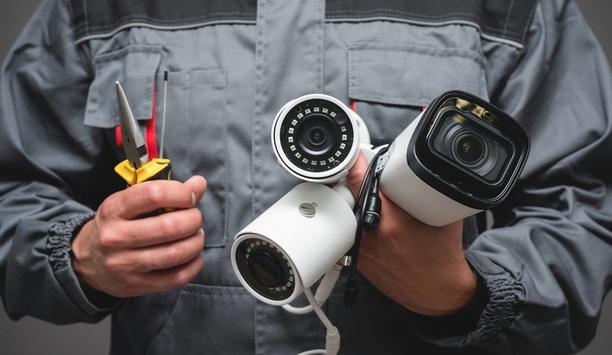
How to lower labour costs when installing video surveillance
Download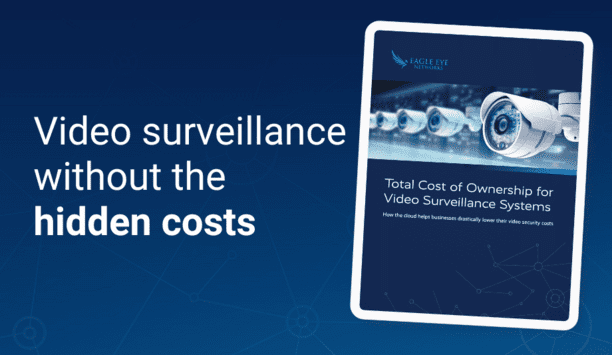
Total cost of ownership for video surveillance
Download
The truth behind 9 mobile access myths
Download
5 surprising findings from OT vulnerability assessments
Download
Guide for HAAS: New choice of SMB security system
Download
Precision and intelligence: LiDAR's role in modern security ecosystems
Download
Using artificial intelligence (AI) to automate physical security systems
Download
Palm vein recognition
Download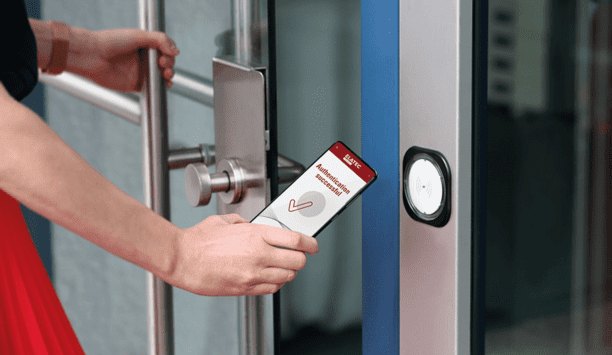
Physical access control
Download
The 2024 state of physical access trend report
Download
The security challenges of data centers
Download
Security practices for hotels
Download
Access control system planning phase 2
Download
Honeywell GARD USB threat report 2024
Download
Access control system planning phase 1
Download
How to lower labour costs when installing video surveillance
Download
Total cost of ownership for video surveillance
Download
The truth behind 9 mobile access myths
Download
5 surprising findings from OT vulnerability assessments
Download
Guide for HAAS: New choice of SMB security system
Download
Precision and intelligence: LiDAR's role in modern security ecosystems
Download
Using artificial intelligence (AI) to automate physical security systems
Download
Palm vein recognition
Download
Physical access control
Download
The 2024 state of physical access trend report
Download
The security challenges of data centers
Download
Security practices for hotels
Download
Access control system planning phase 2
Download
Honeywell GARD USB threat report 2024
Download


The ultimate guide to mastering key control
Download
Using artificial intelligence (AI) to automate physical security systems
Download
A modern guide to data loss prevention
Download
7 proven solutions for law enforcement key control and asset management
Download
The truth behind 9 mobile access myths
Download



